2017-11-30 - Nº 135

Editorial
Esta é a Newsletter Nº 135 que se apresenta com o mesmo formato que as anteriores. Se gostar da Newsletter partilhe-a!
Todas as Newsletters encontram-se indexadas no link.
Esta Newsletter tem os seguintes tópicos:
Faz hoje anos que nascia, em 1711, Ebenezer Kinnersley. Este inventor americano de origem inglesa ficou conhecido pelas suas investigações da electricidade. Em 1748, Kinnersley demonstrou que o fluxo eléctrico realmente atravessou a água, usando na experiência uma calha de água com cerca de 3 m de comprimento. Em 1751, como um dos primeiros divulgadores da ciência, ele começou a dar palestras sobre "O incêndio eléctrico recém-descoberto". As suas experiências mostraram a diferença entre a electricidade produzida pelos globos de vidro e de enxofre, que ele comunicou a Benjamin Franklin na Filadélfia, uma vez que mostraram sem duvida que a teoria positiva e negativa estava correta. Ele também procurou maneiras de proteger os edifícios dos raios, inventou um termómetro eléctrico e demonstrou que a electricidade pode produzir calor.
Faz também anos hoje que nascia, em 1756, Ernst Chladni. Este físico alemão é conhecido como o "pai da acústica" pelas suas investigações matemáticas de ondas sonoras. As figuras de Chladni, vistas quando placas finas cobertas de areia em vibração, são padrões complexos de vibração com linhas nodais que permanecem estacionárias e reter areia. Ele demonstrou isso para uma audiência de cientistas em Paris em 1809. Ele mediu a velocidade do som em vários gases, determinando o tom da nota de um tubo de órgão preenchido com diferentes gases. Para determinar a velocidade do som em sólidos, Chladni usou a análise do padrão nodal em vibrações de ondas estacionárias em hastes longas. Ele criou um instrumento musical chamado euphon, feito de vidro e barras de aço que vibram esfregando com um dedo humedecido.
Faz igualmente anos hoje que nascia, em 1819, Cyrus West Field. Este Empresário norte-americano promoveu o primeiro cabo telefónico transatlântico. Em 1856, ajudou a estabelecer Atlantic Telegraph Company. O primeiro cabo foi concluído a 5 de Agosto de 1858, mas falhou pouco depois. Field persistiu, e em 27 de Julho de 1866, um cabo melhorado foi colocado.
Faz também anos hoje que nascia, em 1858, Jagadish Chandra Bose. Físico indiano e fisiologista de plantas que investigou as propriedades de ondas de rádio muito pequenas, telegrafia sem fio e fadiga induzida por radiação em materiais inorgânicos. O seu trabalho fisiológico envolveu medidas comparativas das respostas das plantas expostas ao stress. A sua invenção de instrumentos altamente sensíveis para a detecção de respostas minuciosas por organismos vivos a estímulos externos permitiu antecipar o paralelismo entre os tecidos animais e vegetais observados por biofísicos posteriormente.
Faz igualmente anos hoje que nascia, em 1869, Gustaf Dalén. Este engenheiro sueco que ganhou o Prémio Nobel de Física em 1912 por sua invenção da válvula solar automática, ou Solventil, que regula uma fonte de luz de gás pela ação da luz solar, desligando-a ao amanhecer e no crepúsculo ou noutros períodos de escuridão. Ela rapidamente entrou em uso mundial para bóias e faróis não tripulados. Ao recuperar-se de um acidente, convalescendo em casa, ele notou o tempo que a sua esposa passava a tomar conta do fogão a lenha. Ele decidiu inventar um fogão mais eficiente e económico. Em 1922, o Amalgamated Gas Accumulator Co. de Dalen patenteou seu design e colocou os primeiros fogões AGA em produção. Esses fogões produziram um calor radiante que manteve a cozinha quente. O AGA continua popular ainda hoje.
Por fim faz anos hoje que nascia, em 1915, Henry Taube. Este Químico americano nascido no Canadá que, em 1983, ganhou o Prémio Nobel de Química pela sua extensa pesquisa sobre as propriedades e reacções de substâncias inorgânicas dissolvidas, particularmente processos de redução de oxidação envolvendo iões de elementos metálicos. Os metais geralmente formam complexos, nos quais outros átomos se agrupam em torno do átomo de metal, transferindo e partilhando electrões entre si para se unirem. Taube descobriu que durante uma reacção, uma "ponte" temporária de átomos geralmente se forma entre átomos de metal. Ele estudou a transferência de electrões através desta ponte, acelerando as reacções que de outra forma aconteceriam lentamente ou não. As suas ideias são relevantes além de seu próprio campo de estudo, por exemplo, em processos bioquímicos como a respiração.
Esta semana ficámos a saber que, na china, uma equipa de cirurgiões procedeu ao implante de um joelho do tântalo num paciente. Zhang Jingui recuperou a mobilidade um dia depois de ter feito a cirurgia realizada por médicos do First Hospital Affiliated da AMU, um hospital no município de Chongqing, no sudoeste da China. A articulação do joelho de 84 anos foi amplamente revista pelo implante personalizado.
Também esta semana ficámos a saber que a NASA já está a construir o Mars Rover para sua próxima missão a Marte. De relance, é muito parecido com o seu antecessor, o Curiosity Mars rover. Mas não há dúvida de que é uma máquina cheia de ciência: possui sete novos instrumentos, rodas redesenhadas e mais autonomia. Uma broca irá capturar núcleos de rocha, enquanto um sistema de cache com um braço robótico em miniatura irá selar essas amostras. Sendo então depositados na superfície marciana para possível recolha numa missão futura.
Ainda esta semana, uma equipa liderada pela NASA encontrou evidências de que o exoplaneta de grande dimensões designado por WASP-18b está envolvido numa estratosfera sufocante carregada com monóxido de carbono e desprovida de água. Os resultados provêm de uma nova análise das observações feitas pelos telescópios espaciais Hubble e Spitzer. O planeta WASP-18b tem 10 vezes a massa de Júpiter e está a uma distância de cerca de 325 anos-luz da Terra e tem um período orbital de 23 horas.
Na Newsletter desta semana apresentamos diversos projetos de maker assim como um modelo 3D que poderá ser útil. São apresentadas as revistas newelectronics de 28 Novembro 2017, a MagPI nº 64 de Dezembro de 2017 e a revista "The Official Raspberry PI Projects Book Volume 3".
 João Alves ([email protected])
João Alves ([email protected])
O conteúdo da Newsletter encontra-se sob a licença  Creative Commons Attribution-NonCommercial-ShareAlike 4.0 International License.
Creative Commons Attribution-NonCommercial-ShareAlike 4.0 International License.
Novidades da Semana
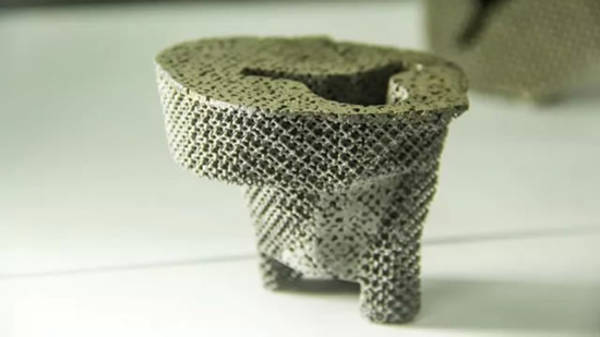
World-first: 3D printed tantalum knee joint implanted in a Chinese patient
"A Chinese patient recently received a knee-revision surgery with the implantation of the first 3D printed tantalum knee joint in the world. Zhang Jingui regained mobility a day after he had received the surgery performed by doctors from the First Hospital Affiliated to AMU, a hospital in Chongqing municipality in south-west China. The 84-year-old’s knee joint was largely revised by the personalized implant. Incident of knee osteoarthritis among Chinese has reached 2.2 to 3.5 percent, the Chongqing-based website CQNEWS.NET reported. Every year, more than 400 people have knee-replacement surgery in the First Hospital Affiliated to AMU. Professor Yang Liu is the surgeon of the innovative surgery and the head of surgical department of the hospital." [...]

NASA Builds its Next Mars Rover Mission
" just a few years, NASA's next Mars rover mission will be flying to the Red Planet. At a glance, it looks a lot like its predecessor, the Curiosity Mars rover. But there's no doubt it's a souped-up science machine: It has seven new instruments, redesigned wheels and more autonomy. A drill will capture rock cores, while a caching system with a miniature robotic arm will seal up these samples. Then, they'll be deposited on the Martian surface for possible pickup by a future mission. This new hardware is being developed at NASA's Jet Propulsion Laboratory, Pasadena, California, which manages the mission for the agency." [...]

Exoplanet Has Smothering Stratosphere Without Water
"A NASA-led team has found evidence that the oversized exoplanet WASP-18b is wrapped in a smothering stratosphere loaded with carbon monoxide and devoid of water. The findings come from a new analysis of observations made by the Hubble and Spitzer space telescopes. The formation of a stratosphere layer in a planet's atmosphere is attributed to "sunscreen"-like molecules, which absorb ultraviolet (UV) and visible radiation coming from the star and then release that energy as heat. The new study suggests that the "hot Jupiter" WASP-18b, a massive planet that orbits very close to its host star, has an unusual composition, and the formation of this world might have been quite different from that of Jupiter and gas giants in other planetary systems. "The composition of WASP-18b defies all expectations," said Kyle Sheppard of NASA's Goddard Space Flight Center in Greenbelt, Maryland, lead author of the paper published in the Astrophysical Journal Letters. "We don't know of any other extrasolar planet where carbon monoxide so completely dominates the upper atmosphere."" [...]
Outras Notícias

HDMI Forum Releases Version 2.1 of the HDMI Specification
"HDMI Forum, Inc. today announced the release of Version 2.1 of the HDMI® Specification which is now available to all HDMI 2.0 adopters. This latest HDMI Specification supports a range of higher video resolutions and refresh rates including 8K60 and 4K120, and resolutions up to 10K. Dynamic HDR formats are also supported, and bandwidth capability is increased up to 48Gbps. Supporting the 48Gbps bandwidth is the new Ultra High Speed HDMI Cable. The cable ensures high-bandwidth dependent features are delivered including uncompressed 8K video with HDR. It features exceptionally low EMI (electro-magnetic interference) which reduces interference with nearby wireless devices." [...]

Samsung Starts Mass Production of its 2nd Generation 10nm FinFET Process Technology
"Samsung Electronics, a world leader in advanced semiconductor technology, today announced that its Foundry Business has commenced mass production of System-on-Chip (SoC) products built on its second generation 10-nanometer (nm) FinFET process technology, 10LPP (Low Power Plus). 10LPP process technology allows up to 10-percent higher performance or 15-percent lower power consumption compared to its first generation 10nm process technology, 10LPE (Low Power Early). As this process is derived from the already proven 10LPE technology, it offers competitive advantages by greatly reducing turn-around time from development to mass production and by providing significantly higher initial manufacturing yield. SoCs designed with 10LPP process technology will be used in digital devices scheduled to launch early next year and are expected to become more widely available throughout the year. “We will be able to better serve our customers through the migration from 10LPE to 10LPP with improved performance and higher initial yield,” said Ryan Lee, vice president of Foundry Marketing at Samsung Electronics. “Samsung with its long-living 10nm process strategy will continue to work on the evolution of 10nm technology down to 8LPP to offer customers distinct competitive advantages for a wide range of applications.” Samsung also announced that its newest manufacturing line, S3, located in Hwaseong, Korea, is ready to ramp up production of process technologies including 10nm and below." [...]

Announcing Amazon FreeRTOS – Enabling Billions of Devices to Securely Benefit from the Cloud
"I was recently reading an article on ReadWrite.com titled “IoT devices go forth and multiply, to increase 200% by 2021“, and while the article noted the benefit for consumers and the industry of this growth, two things in the article stuck with me. The first was the specific statement that read “researchers warned that the proliferation of IoT technology will create a new bevvy of challenges. Particularly troublesome will be IoT deployments at scale for both end-users and providers.” Not only was that sentence a mouthful, but it really addressed some of the challenges that can come building solutions and deployment of this exciting new technology area. The second sentiment in the article that stayed with me was that Security issues could grow. So the article got me thinking, how can we create these cool IoT solutions using low-cost efficient microcontrollers with a secure operating system that can easily connect to the cloud. Luckily the answer came to me by way of an exciting new open-source based offering coming from AWS that I am happy to announce to you all today." [...]
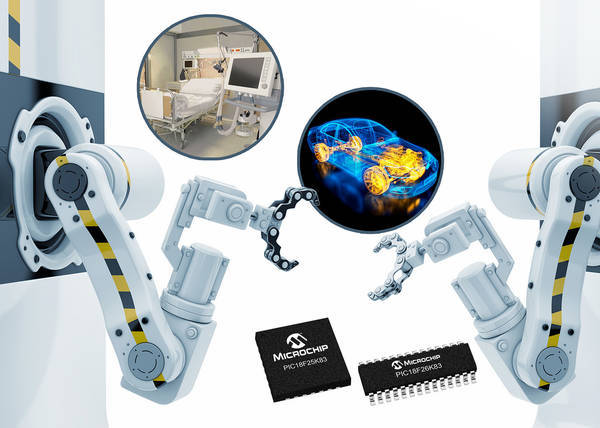
Improve Response Time to Critical System Events on CAN Networks with New 8-Bit MCU with Core Independent Peripherals
"Microchip’s PIC18 product line has been expanded to include a new line of 8-bit microcontrollers (MCUs) that combine a Controller Area Network (CAN) bus with an extensive array of Core Independent Peripherals (CIPs). The CIPs increase system capabilities while making it easier for designers to create CAN-based applications without the complexity of added software. For more information on the two new PIC18 K83 devices available from Microchip Technology Inc. (NASDAQ: MCHP), visit: www.microchip.com/k83. A key advantage of using a K83 MCU in CAN-based systems is that the CIPs provide deterministic response to real time events, shorten design time and can be easily configured through the MPLAB® Code Configurator (MCC) tool. The new family is ideal for applications using CAN in the medical, industrial and automotive markets, such as motorized surgical tables, asset tracking, ultrasound machines, automated conveyors and automotive accessories. System designers can benefit greatly by saving time, as it is significantly easier to configure a hardware-based peripheral, as opposed to writing and validating an entire software routine, to accomplish a task." [...]

NASA to Test Advanced Space Wireless Network and Device for Returning Small Spacecraft to Earth
"NASA launched the Technology Educational Satellite, or TechEdSat-6, to the International Space Station on Orbital ATK’s Cygnus spacecraft from NASA’s Wallops Flight Facility in Virginia on Nov. 12. This bread loaf-sized satellite is part of a continuing series to demonstrate the "Exo-Brake" parachute device, advanced communications and wireless sensor networks. TechEdSat-6 was released into low-Earth orbit from the NanoRacks platform on Nov. 20, to begin a series of wireless sensor experiments which will be the first self-powered tests, expanding the capabilities of sensor networks for future ascent or re-entry systems. This is the fourth TechEdSat satellite carrying an updated version of the Exo-Brake that will demonstrate guided controlled re-entry of small spacecraft to safely return science experiments from space. “The Exo-Brake’s shape can be changed to vary the drag on the satellite. With the help of high-fidelity simulations, we will demonstrate a low-cost, propellant-less method of returning small payloads quickly, and to fairly precise locations, for retrieval,” said Michelle Munk, NASA’s System Capability Lead for Entry, Descent and Landing." [...]
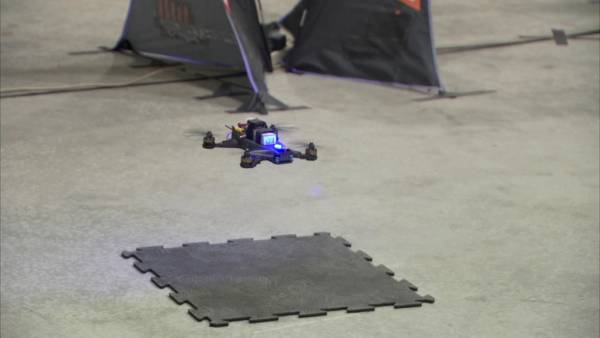
Drone Race: Human Versus Artificial Intelligence
"Drone racing is a high-speed sport demanding instinctive reflexes -- but humans won't be the only competitors for long. Researchers at NASA's Jet Propulsion Laboratory in Pasadena, California, put their work to the test recently. Timing laps through a twisting obstacle course, they raced drones controlled by artificial intelligence (A.I.) against a professional human pilot. The race, held on Oct. 12, capped off two years of research into drone autonomy funded by Google. The company was interested in JPL's work with vision-based navigation for spacecraft -- technologies that can also be applied to drones." [...]
Ciência e Tecnologia
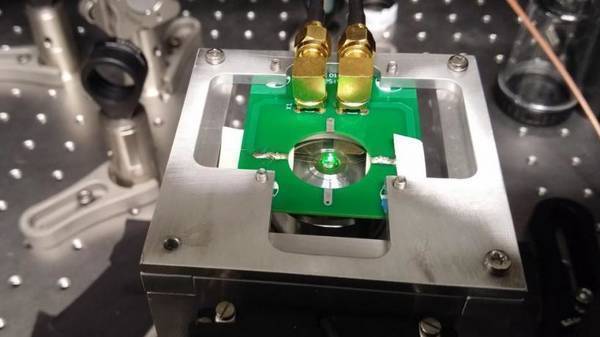
Enhancing the quantum sensing capabilities of diamond: Shooting electrons at diamonds can introduce quantum sensors into them
"Researchers have discovered that dense ensembles of quantum spins can be created in diamond with high resolution using an electron microscopes, paving the way for enhanced sensors and resources for quantum technologies. Diamonds are made of carbon atoms in a crystalline structure, but if a carbon atom is replaced with another type of atom, this will result in a lattice defect. One such defect is the Nitrogen-Vacancy (NV), where one carbon atom is replaced by a nitrogen atom, and its neighbor is missing (an empty space remains in its place). If this defect is illuminated with a green laser, in response it will emit red light (fluoresce) with an interesting feature: its intensity varies depending on the magnetic properties in the environment. This unique feature makes the NV center particularly useful for measuring magnetic fields, magnetic imaging (MRI), and quantum computing and information. In order to produce optimal magnetic detectors, the density of these defects should be increased without increasing environmental noise and damaging the diamond properties." [...]

Quantum Biology: Superconducting Qubits Help to Explain Photosynthesis
"An international team of quantum physicists have learned how to simulate processes which can help to decipher the mechanisms of photosynthesis. By creating a system based only on a single superconducting qubit at almost absolute zero temperature, scientists have managed to propel the quantum mechanical modeling of natural processes to a new level. The research article on the results was published in NatureCommunications. “A group of international scientists from NUST MISIS, the Russian Quantum Center, Karlsruhe Institute of Technology and Johannes Gutenberg University Mainz, with the active participation of Professor Alexey Ustinov, the head of the NUST MISIS Laboratory of Superconducting Metamaterials, have demonstrated the capability to solve a number of fundamental problems in the field of quantum physics and quantum chemistry—problems associated with the interaction of light and matter. These systems, based on superconducting qubits, allow us to solve tasks that conventional supercomputers can`t handle”, Alevtina Chernikova, Rector of NUST MISIS, said. Professor Alexey Ustinov, head of the NUST MISIS Laboratory of Superconducting Metamaterials and one of the research authors explained: the issue occurs in systems with a strong interaction of light and matter, when the strength of this interaction is comparable to the value of transition between energy levels." [...]

Designing New Metal Alloys Using Engineered Nanostructures
"Stony Brook University assistant professor Jason Trelewicz brings his research to design and stabilize nanostructures in metals to Brookhaven Lab's Center for Functional Nanomaterials Materials science is a field that Jason Trelewicz has been interested in since he was a young child, when his father—an engineer—would bring him to work. In the materials lab at his father’s workplace, Trelewicz would use optical microscopes to zoom in on material surfaces, intrigued by all the distinct features he would see as light interacted with different samples. Now, Trelewicz—an assistant professor in the College of Engineering and Applied Sciences’ Department of Materials Science and Chemical Engineering with a joint appointment in the Institute for Advanced Computational Science at Stony Brook University and principal investigator of the Engineered Metallic Nanostructures Laboratory—takes advantage of the much higher magnifications of electron microscopes to see tiny nanostructures in fine detail and learn what happens when they are exposed to heat, radiation, and mechanical forces. In particular, Trelewicz is interested in nanostructured metal alloys (metals mixed with other elements) that incorporate nanometer-sized features into classical materials to enhance their performance. The information collected from electron microscopy studies helps him understand interactions between structural and chemical features at the nanoscale. This understanding can then be employed to tune the properties of materials for use in everything from aerospace and automotive components to consumer electronics and nuclear reactors." [...]
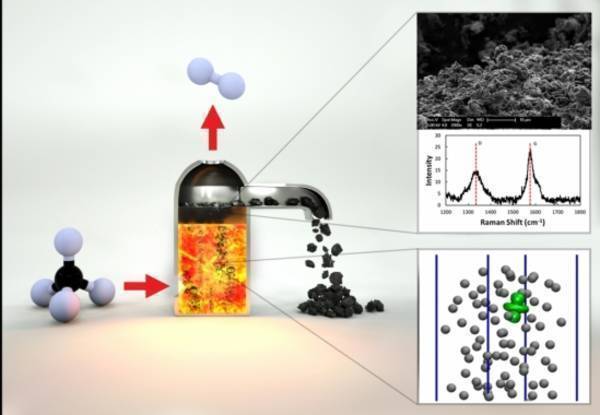
Bridging the Gap
"As we work to toward more sustainable ways of powering our lifestyles, there is a quest to bridge the gap between the carbon dioxide-emitting fossil fuels we rely on for our most basic needs, and the cleaner, but not yet economically feasible alternative technologies. To that end, a group at UC Santa Barbara has explored methods by which currently cheap and abundant methane (CH4) can be reduced to clean-burning hydrogen (H2) while also preventing the formation of carbon dioxide (CO2), a greenhouse gas. Its report, “Catalytic molten metals for the direct conversion of methane to hydrogen and separable carbon,” appears in the journal Science. “In the U.S., methane will be the heart of our economy for four or five decades, and figuring out ways to use it more sustainably is what motivates us,” said UCSB chemical engineering professor Eric McFarland. “This paper was an interesting angle on something we’ve been looking at for a long time.” A product of both natural and man-made processes, methane — the primary component of natural gas — is an important source of fuel for cooking, heating and powering our homes and is used in manufacturing and transportation. As a waste product that is a more potent greenhouse gas than carbon dioxide, it is the target of many efforts to capture and reduce such emissions." [...]
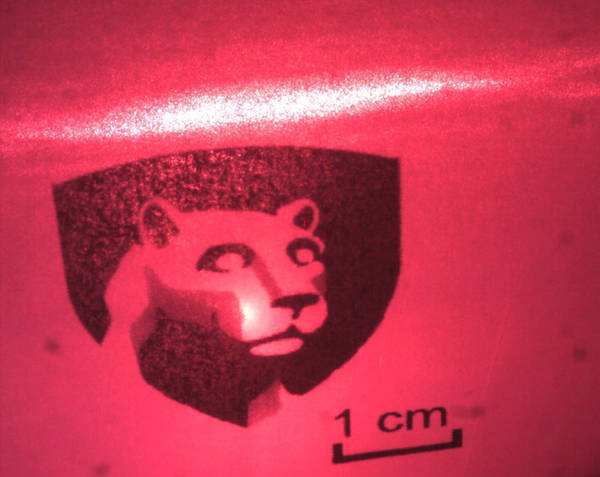
A curious quirk brings organic diode lasers one step closer
"Since their invention in 1962, semiconductor diode lasers have revolutionized communications and made possible information storage and retrieval in CDs, DVDs and Blu-ray devices. These diode lasers use inorganic semiconductors grown in elaborate high vacuum systems. Now, a team of researchers from Penn State and Princeton University have taken a big step toward creating a diode laser from a hybrid organic-inorganic material that can be deposited from solution on a laboratory benchtop. "It's usually not a big leap to turn a light emitting diode into a laser," said Chris Giebink, assistant professor of electrical engineering, Penn State. "You essentially just add mirrors and drive it harder. Once organic light-emitting diodes were invented 30 years ago, everybody thought that as soon as we had relatively efficient OLEDs, that an organic laser diode would soon follow."" [...]
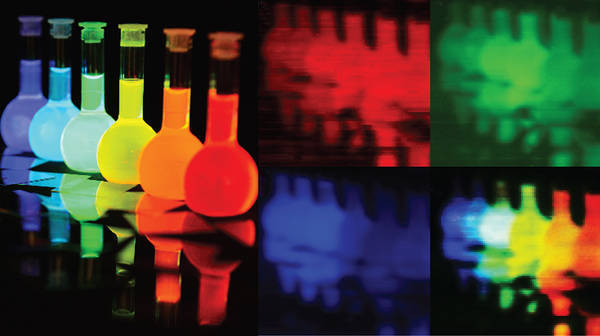
The stacked color sensor
"Red-sensitive, blue-sensitive and green-sensitive color sensors stacked on top of each other instead of being lined up in a mosaic pattern – this principle could allow image sensors with unprecedented resolution and sensitivity to light to be created. However, so far, the reality hasn't quite met expectations. Researchers from Empa and ETH Zurich have now developed a sensor prototype that absorbs light almost optimally – and is also cheap to produce. The human eye has three different types of sensory cells for the perception of color: cells that are respectively sensitive to red, green and blue alternate in the eye and combine their information to create an overall colored image. Image sensors, for example in mobile phone cameras, work in a similar way: blue, green and red sensors alternate in a mosaic-like pattern. Intelligent software algorithms calculate a high-resolution color image from the individual color pixels." [...]
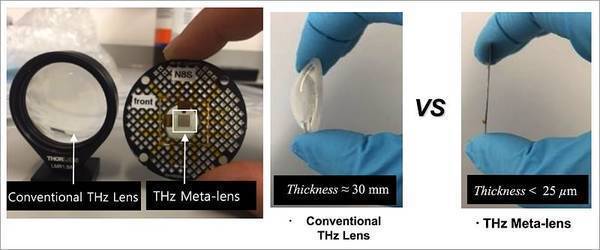
Ultrathin and Flat Graphene Metalenses Gain More Properties
"On the quest for miniaturization, scientists at the Center for Integrated Nanostructure Physics, within the Institute for Basic Science (IBS, South Korea), in collaboration with researchers from the University of Birmingham and the Korea Advanced Institute of Science and Technology (KAIST), develop credit card-thick, flat lenses with tunable features. These optical devices, made of graphene and a punctured gold surface, could become optical components for advanced applications, such as amplitude tunable lenses, lasers (i.e. vortex phase plates), and dynamic holography. Metasurfaces are new 2D materials that can effectively control the electric and magnetic components of light (and other electromagnetic waves) and bend them to bespoken directions. Controlling the beam’s direction can bring out interesting phenomena; the most incredible being the “invisibility cloak effect”, where light waves bypass an object recreating the image beyond the object, as flowing water in a river would bypass a stone. Published in Advanced Optical Materials, the study presents the properties of a metasurface which works as a convex lens." [...]
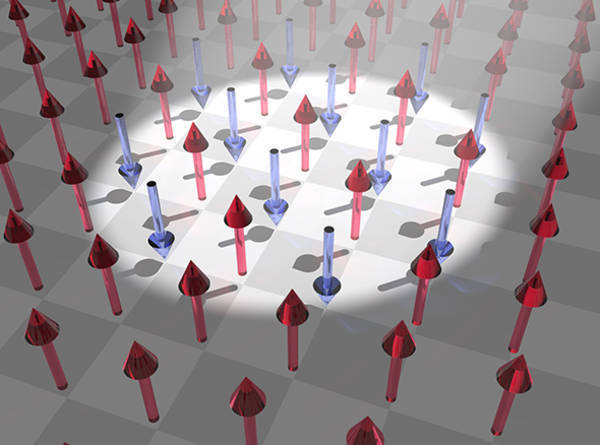
Controlling spin for memory storage
"Using computer simulations, researchers are learning how lasers might be used to switch how electrons spin within magnetic materials, making room for faster magnetic memory devices. Tohoku University researchers have developed a computational simulation that shows that using ultrafast laser pulses to excite electrons in a magnetic material switches them into a transient non-magnetic state. This could reduce the time involved in manipulating a material's magnetism, improving magnetic storage and information processing technologies. Storing 'bits', or binary digits, of information in magnetic memory devices requires the ability to reverse the magnetism within a material between ferromagnetic and antiferromagnetic. In the ferromagnetic state, the electron spins within the material align parallel to each other and spin in the same direction, making them and the material magnetic. In the antiferromagnetic state, the electron spins align parallel to each other but neighbouring electrons spin in opposite directions, cancelling out each other's effects and making them and the material in which they exist virtually non-magnetic." [...]

Quantum dots amplify light with electrical pumping
"Los Alamos achieves light amplification with electrically stimulated quantum dots, critical step towards solution-processible laser diodes In a breakthrough development, Los Alamos scientists have shown that they can successfully amplify light using electrically excited films of the chemically synthesized semiconductor nanocrystals known as quantum dots. The quantum dot films are integrated into devices much like the now-ubiquitous light-emitting diodes (LEDs), but, in this case designed to sustain the high current densities required for achieving the optical-gain regime. One sees laser diodes every day in laser pointers, barcode readers and the like, and a key element of such devices is an optical-gain medium, which instead of absorbing incident light, amplifies it. “Optical gain with electrically excited quanum dots is now a reality,” said Victor Klimov, head of the quantum dot team at Los Alamos. “We have been working to develop new lasing media, using chemically synthesized quantum dots, although it had been widely believed that quantum dot lasing with electrical stimulation is simply impossible,” he said. “By using our specially designed dots, we can avoid energy losses created by Auger recombination.” New lasers, made more efficiently These results demonstrate the feasibility of a new generation of highly flexible, electrically pumped lasers processible from solutions that can complement or even eventually displace existing laser diodes fabricated using more complex and costly vacuum-based epitaxial techniques." [...]
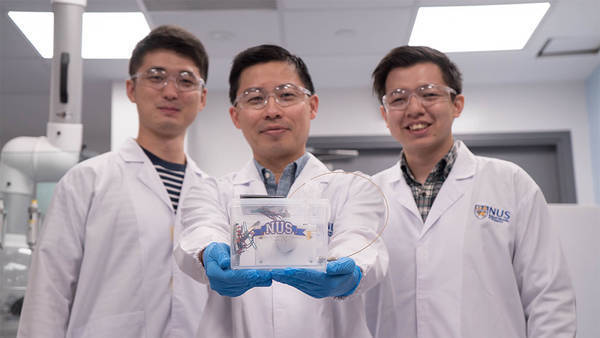
NUS scientists develop artificial photosynthesis device for greener ethylene production
"The device could reduce the carbon footprint of ethylene production A team of scientists from the National University of Singapore (NUS) has developed a prototype device that mimics natural photosynthesis to produce ethylene gas using only sunlight, water and carbon dioxide. The novel method, which produces ethylene at room temperature and pressure using benign chemicals, could be scaled up to provide a more eco-friendly and sustainable alternative to the current method of ethylene production. This development led by Assistant Professor Jason Yeo Boon Siang from the Department of Chemistry at NUS Faculty of Science and the Solar Energy Research Institute of Singapore (SERIS) was first published in the prestigious scientific journal ACS Sustainable Chemistry & Engineering. Challenges of the current production of ethylene Ethylene, which is the building block of polyethylene, is an important chemical feedstock produced in large quantities for manufacturing plastics, rubber and fibres. More than 170 million tonnes of ethylene was produced worldwide in 2015 alone, and the global demand is expected to exceed 220 million tonnes by 2020. Current industrial production of ethylene employs steam cracking of fossil fuels at between 750°C to 950°C, which consumes a large amount of energy and poses a strain on natural fuel resources." [...]
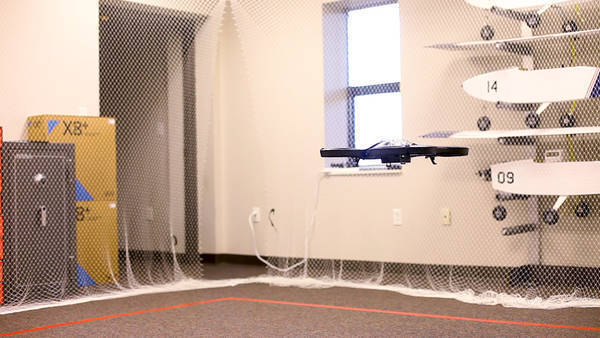
UTC students’ research project controls drones using brainwaves
"Buzzing like a mammoth insect, the four-prop drone lifts off the ground, rising straight up. Once it reaches about four feet, it hovers for a bit, then slowly settles back to the ground. It doesn’t seem like much of a flight until you understand how it happened. No handheld controls, no tether, no nothing. Just brain waves. Tony Ferguson sits about 12 feet away at a laptop." [...]
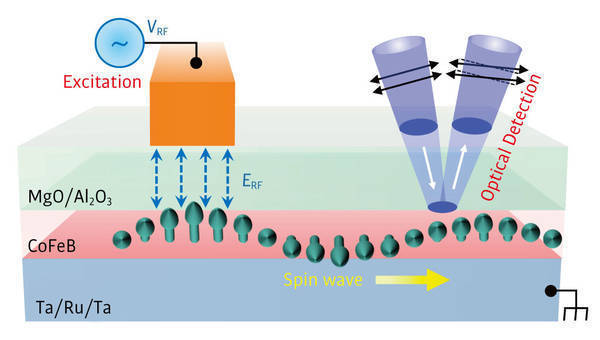
New-wave spintronics comes to light
"Successful injection of tiny ripples into ultrathin magnetic films holds promise for computer chips that never overheat Faint signals detected by a RIKEN team with a sensitive optical microscope have revealed a new way to realize low-energy spintronic devices1. Iron bar magnets possess a permanent magnetization because their atoms tend to align their electron spin with those of their neighbors. Materials with this property are known as ferromagnets. Perturbing one spin in a ferromagnetic crystal can set off a wave of collective spin motion throughout the crystal. Such spin waves behave similarly to radio waves, making it easy to use them to carry encoded amplitude and phase information in a circuit. Unlike the conveyance of data by electric currents in conventional devices, this data flow does not involve the movement of electrons—eliminating unwanted heating, which plagues the design of modern devices." [...]
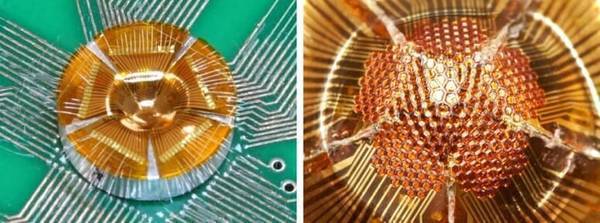
Optoelectronics origami: An easy-to-make, double-duty curved image sensor
"Cellphone users rely on their phone cameras to capture virtually every aspect of their lives. Far too often, however, they end up with photos that are a sub-par reproduction of reality. While operator error sometimes comes into play, the camera’s digital image sensor is the most likely culprit. A flat, silicon surface, it just can’t process images captured by a curved camera lens as well as the similarly curved image sensor — otherwise known as the retina — in a human eye. In an advance that could lead to cameras with features such as infinite depth of field, wider view angle, low aberrations, and vastly increased pixel density, flexible optoelectronics pioneer Zhenqiang (Jack) Ma has devised a method for making curved digital image sensors in shapes that mimic the convex features of an insect’s compound eye and a mammal’s concave “pinhole” eye. Along with his students and collaborators, Ma, the Lynn H. Matthias and Vilas Distinguished Achievement Professor of Electrical and Computer Engineering at the University of Wisconsin–Madison, described the technique in a study published today (Nov. 24, 2017) in the journal Nature Communications." [...]
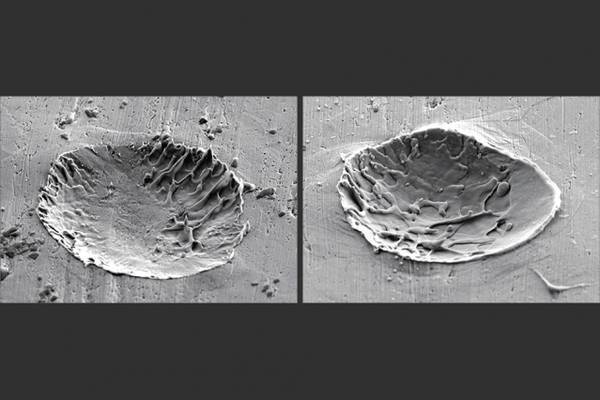
How to get sprayed metal coatings to stick
"When bonding two pieces of metal, either the metals must melt a bit where they meet or some molten metal must be introduced between the pieces. A solid bond then forms when the metal solidifies again. But researchers at MIT have found that in some situations, melting can actually inhibit metal bonding rather than promote it. The surprising and counterintuitive finding could have serious implications for the design of certain coating processes or for 3-D printing, which both require getting materials to stick together and stay that way. The research, carried out by postdocs Mostafa Hassani-Gangaraj and David Veysset and professors Keith Nelson and Christopher Schuh, was reported in two papers, in the journals Physical Review Letters and Scripta Materialia. Schuh, who is the Danae and Vasilis Salapatas Professor of Metallurgy and head of the Department of Materials Science and Engineering, explains that one of the papers outlines “a revolutionary advance in the technology” for observing extremely high-speed interactions, while the other makes use of that high-speed imaging to reveal that melting induced by impacting particles of metal can impede bonding." [...]
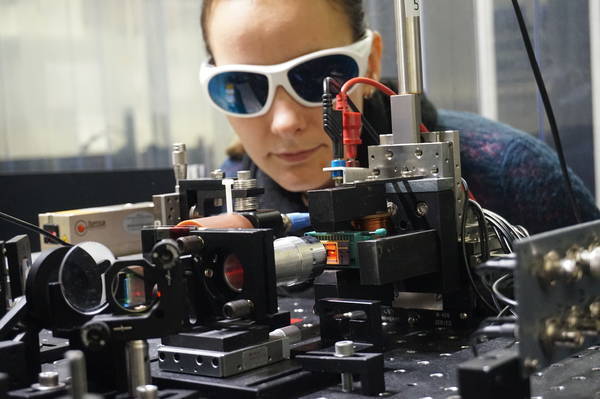
Spin current from heat: new material increases efficiency
"Electronic devices such as computers generate heat that mostly goes to waste. Physicists at Bielefeld University have found a way to use this energy: They apply the heat to generate magnetic signals known as ‘spin currents’. In future, these signals could replace some of the electrical current in electronic components. In a new study, the physicists tested which materials can generate this spin current most effectively from heat. The research was carried out in cooperation with colleagues from the University of Greifswald, Gießen University, and the Leibniz Institute for Solid State and Materials Research in Dresden. Their findings are being published today (20.11.2017) in the research journal ‘Nature Communications’." [...]
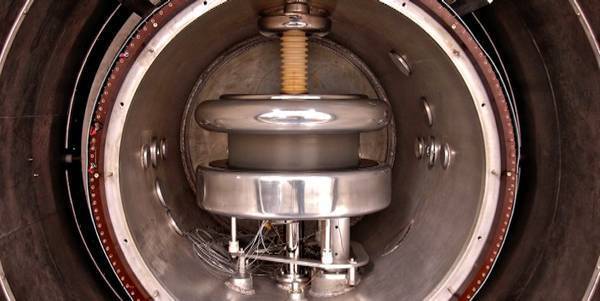
Ultralight axions are unlikely to be candidates for dark matter
"Astrophysical and cosmological observations indicate that most of our universe is invisible, composed of dark matter and dark energy. Only about five percent of what is out there is visible to us, such as matter here on Earth or in space as stars. An international group of scientists from seven countries, including Professor Dieter Ries of Johannes Gutenberg University Mainz (JGU), has now made a new contribution to the search for the mysterious dark matter. Their evaluation of data obtained at the Paul Scherrer Institute (PSI) in Switzerland and the Institut Laue-Langevin in France shows that dark matter is most likely not composed of ultralight axions. Axions are hypothetical particles whose existence has not yet been proven. Dark matter accounts for approximately 23 percent of the universe." [...]
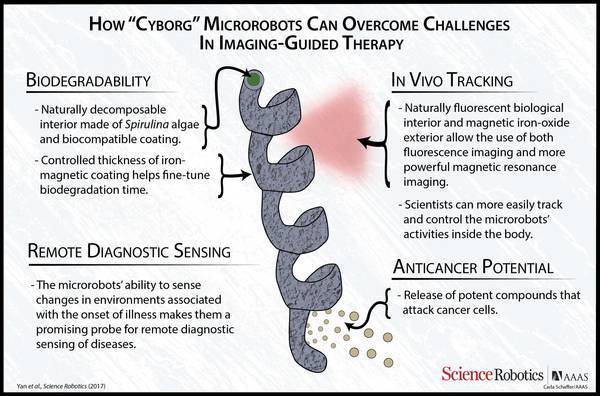
Nanobots pass first stage in ‘fantastic voyage’ from fiction to fact
"A team of scientists have created a new generation of tiny remote controlled nanorobots which could one day allow doctors to diagnose disease and deliver drugs from within the human body. The team led by Professor Li Zhang from the Chinese University of Hong Kong, including Professor Kostas Kostarelos from The University of Manchester, have created the bots from a biodegradable material called spirulina algae. The algae, sold today as a food substitute in health food shops, was a source of nourishment during the time of the Aztecs. But it was rediscovered in the 1960s by Lake Texcoco in Mexico by French researchers. A paper by the team, published in Science Robotics hails the bots’ biodegradability as a new concept, in which an iron magnetic coating helps fine-tune the rate which they degrade. The nanorobots can be remotely controlled within complex biological fluids with high precision using magnetic fields." [...]
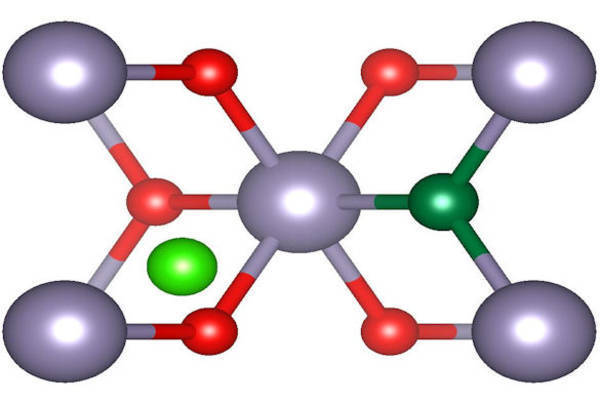
Discovery points the way to better and cheaper transparent conductors
"Researchers at the University of Liverpool have made a discovery that could improve the conductivity of a type of glass coating which is used on items such as touch screens, solar cells and energy efficient windows. Coatings are applied to the glass of these items to make them electrically conductive whilst also allowing light through. Fluorine doped tin dioxide is one of the materials used in commercial low cost glass coatings as it is able to simultaneously allow light through and conduct electrical charge but it turns out that tin dioxide has as yet untapped potential for improved performance. In a paper published in the journal Advanced Functional Materials, physicists identify the factor that has been limiting the conductivity of fluorine doped tin dioxide, which should be highly conductive because fluorine atoms substituted on oxygen lattice sites are each expected to give an additional free electron for conduction. The scientists report, using a combination of experimental and theoretical data, that for every two fluorine atoms that give an additional free electron, another one occupies a normally unoccupied lattice position in the tin dioxide crystal structure. Each so-called “interstitial” fluorine atom captures one of the free electrons and thereby becomes negatively charged." [...]
Eco-friendly Waterborne Semiconductor Inks Using Surfactant
"A team of researchers at DGIST, led by Professor Dae Sung Chung of Energy Science and Engineering has developed a technology to produce environmentally friendly water-borne semiconductor inks using surfactant, which is additives that mix substances of different properties and a component of soap. Polymer semiconductors are carbon compounds showing the electrical properties of semiconductors. It has been highlighted as a next-generation material of wearable smart devices, etc. not only because they are flexible and light in weight, but also they can be processed in a wide area a low cost through the solution process. However, there is an issue that it causes significant environmental pollution as toxic organic solvents are used in the process. Despite the limitations, the research team has developed a semiconductor surface control technique using surfactants for environmentally friendly semiconductor manufacturing processes that do not use toxic organic solvents and has produced water-borne semiconductor inks." [...]
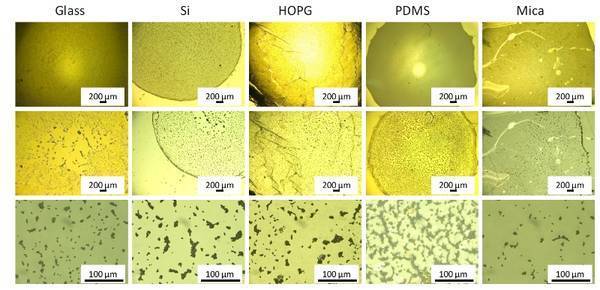
Graphene oxide making any material suitable to create biosensors
"TPU scientist Raul Rodrigez and his colleagues from Lithuania and Germany were the first in the world to suggest how with the help of graphene oxide, in fact ordinary graphene as in pencils, but oxidized to make the surface of any material suitable for immobilization of living cells. Devices with such coatings will make it possible to detect and study individual living cells, including dangerous microorganisms, cancer cells and dangerous substances in the human body. In future, this technology will allow creating flexible diagnostic devices implanted under the skin. The study outcomes were published in Sensors and Actuators B: Chemical (IF 5.4; Q 1). The study was conducted by the researchers from Tomsk Polytechnic University, the University of Vilnius, the Center for Physical Sciences and Technology (Lithuania) and the Chemnitz University of Technology (Germany). ‘Medical scientists are still trying to find an answer to the question related to metastatic spread." [...]

Scientists demonstrate one of largest quantum simulators yet, with 51 atoms
"New technique manipulates atoms into antiferromagnetic state. Physicists at MIT and Harvard University have demonstrated a new way to manipulate quantum bits of matter. In a paper published today in the journal Nature, they report using a system of finely tuned lasers to first trap and then tweak the interactions of 51 individual atoms, or quantum bits. The team’s results represent one of the largest arrays of quantum bits, known as qubits, that scientists have been able to individually control. In the same issue of Nature, a team from the University of Maryland reports a similarly sized system using trapped ions as quantum bits. In the MIT-Harvard approach, the researchers generated a chain of 51 atoms and programmed them to undergo a quantum phase transition, in which every other atom in the chain was excited." [...]
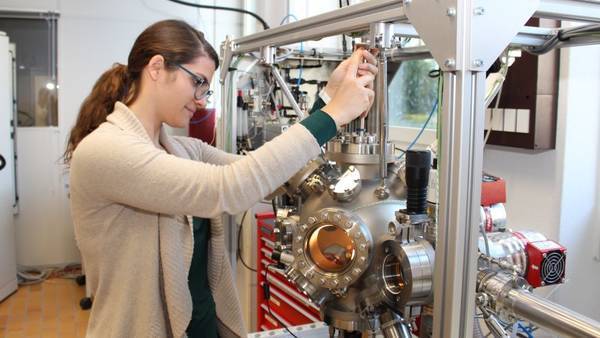
A nanotransistor made of graphene
"Transistors based on carbon nanostructures: what sounds like a futuristic dream could be reality in just a few years' time. An international research team working with Empa has now succeeded in producing nanotransistors from graphene ribbons that are only a few atoms wide, as reported in the current issue of "Nature Communications". Graphene ribbons that are only a few atoms wide, so-called graphene nanoribbons, have special electrical properties that make them promising candidates for the nanoelectronics of the future: while graphene – a one atom thin, honeycomb-shaped carbon layer – is a conductive material, it can become a semiconductor in the form of nanoribbons. This means that it has a sufficiently large energy or band gap in which no electron states can exist: it can be turned on and off – and thus may become a key component of nanotransistors. The smallest details in the atomic structure of these graphene bands, however, have massive effects on the size of the energy gap and thus on how well-suited nanoribbons are as components of transistors. On the one hand, the gap depends on the width of the graphene ribbons, while on the other hand it depends on the structure of the edges." [...]
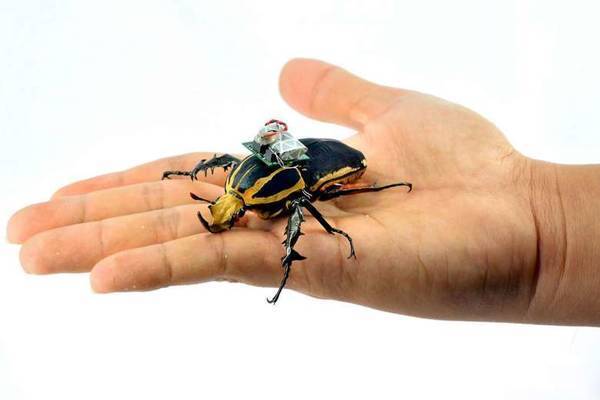
Beetle with tiny computer backpack is world's smallest cyborg insect, say NTU researchers
"A swarm of beetles, carrying tiny computers as backpacks, could one day be crawling through cracks and crevices in search of survivors during rescue missions. Researchers from Nanyang Technological University (NTU) have developed what they say is the world's smallest cyborg insect, which they can move right and left, backward and forward, with the click of a button. Using a species of darkling beetles that measures just 2cm to 2.5cm long and weighs only 0.5g, the team attached a tiny computer of the same weight on the back of each beetle using beewax. Using a remote control, they can send electrical pulses to the insect's antennae through implanted silver wire electrodes. The electric pulses mimic those that the insect would feel when its antennae touch an object, which causes the insect to turn on its escape mechanism. Sending an electric pulse to its right antenna makes it turn left, and vice-versa." [...]
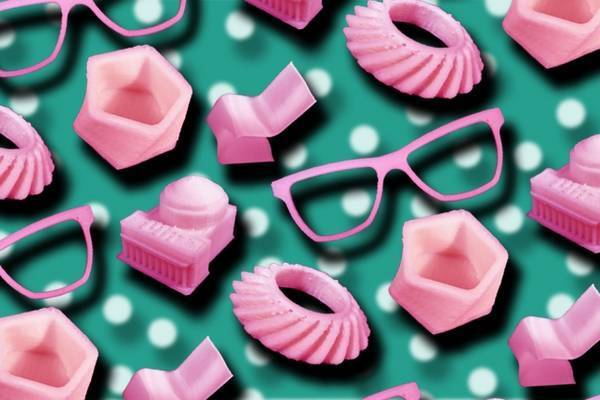
New 3-D printer is 10 times faster than commercial counterparts
"New design may open new opportunities for 3-D-printing technology. MIT engineers have developed a new desktop 3-D printer that performs up to 10 times faster than existing commercial counterparts. Whereas the most common printers may fabricate a few Lego-sized bricks in one hour, the new design can print similarly sized objects in just a few minutes. The key to the team’s nimble design lies in the printer’s compact printhead, which incorporates two new, speed-enhancing components: a screw mechanism that feeds polymer material through a nozzle at high force; and a laser, built into the printhead, that rapidly heats and melts the material, enabling it to flow faster through the nozzle. The team demonstrated its new design by printing various detailed, handheld 3-D objects, including small eyeglasses frames, a bevel gear, and a miniature replica of the MIT dome — each, from start to finish, within several minutes. Anastasios John Hart, associate professor of mechanical engineering at MIT, says the new printer demonstrates the potential for 3-D printing to become a more viable production technique." [...]

Artificial muscles give soft robots superpowers
"Now, researchers at the Wyss Institute at Harvard University and MIT’s Computer Science and Artificial Intelligence Laboratory (CSAIL) have created origami-inspired artificial muscles that add strength to soft robots, allowing them to lift objects that are up to 1,000 times their own weight using only air or water pressure, giving much-needed strength to soft robots. The study is published this week in Proceedings of the National Academy of Sciences (PNAS). “We were very surprised by how strong the actuators [aka, “muscles”] were. We expected they’d have a higher maximum functional weight than ordinary soft robots, but we didn’t expect a thousand-fold increase. It’s like giving these robots superpowers,” says Daniela Rus, Ph.D., the Andrew and Erna Viterbi Professor of Electrical Engineering and Computer Science at MIT and one of the senior authors of the paper. “Artificial muscle-like actuators are one of the most important grand challenges in all of engineering,” adds Rob Wood, Ph.D., corresponding author of the paper and Founding Core Faculty member of the Wyss Institute, who is also the Charles River Professor of Engineering and Applied Sciences at Harvard’s John A. Paulson School of Engineering and Applied Sciences (SEAS)." [...]
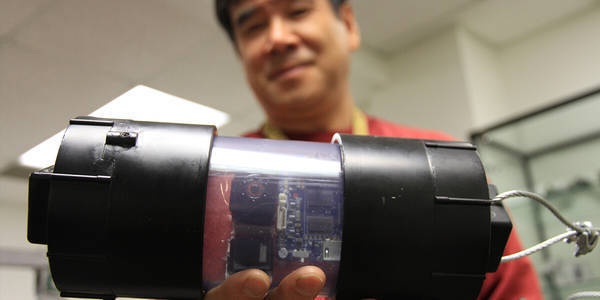
What lies beneath: “PipeFish” robot patrols city pipes to detect underground water leaks
"The United States faces a looming crisis over its deteriorating water infrastructure, and fixing it will be a monumental and expensive task. In Los Angeles alone, about two thirds of the city’s 7,000 miles of water pipes are more than 60 years old—and nearing the end of their useful lives. Water main breaks can cause flooding, leading to serious structural damage and soil erosion. Even small leaks can exacerbate water shortages and allow potentially harmful contaminants into our drinking water. But locating a leak within a vast network of underground pipes is almost impossible. Now, researchers at USC’s Information Sciences Institute (ISI) are developing an autonomous robot that could quickly and inexpensively detect damage in water pipes—even those buried meters below the ground." [...]

Scientists watch diamond turn into graphite
"In a surprising achievement, a team of scientists has turned diamond into graphite, using an X-ray laser. What may seem undesirable at first glance, is a decisive step forward in understanding the fundamental behaviour of solids when they absorb energetic radiation. For the first time, the researchers around Franz Tavella from SLAC National Accelerator Laboratory in the US, Sven Toleikis from DESY and Beata Ziaja from DESY and the Institute of Nuclear Physics in Krakow were able to follow the graphitization in a time-resolved manner. “In addition to these fundamental aspects, understanding the graphitization process is important for diamond-based technologies, since diamond is increasingly used for practical applications,” the scientists write in the journal High Energy Density Physics. Diamond and graphite are different forms of carbon that differ in their inner crystal structure. Diamond is the high-pressure phase that forms deep in the earth." [...]
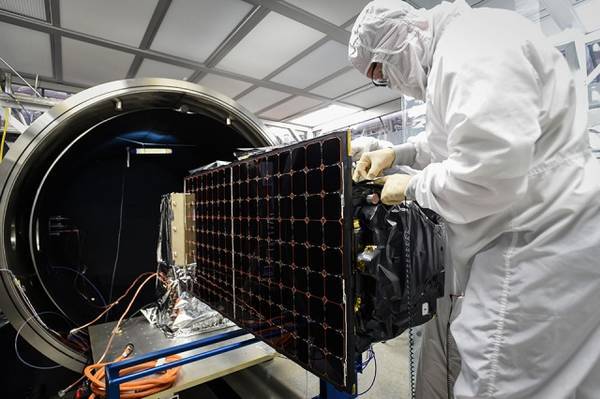
Monitoring activity in the geosynchronous belt
"New ORS-5 SensorSat satellite developed at the MIT Lincoln Laboratory is fulfilling a critical need for situational awareness in space. In the darkness of 2 a.m. on Aug. 26, the sky over Cape Canaveral, Florida, lit up with the bright plume of a Minotaur rocket lifting off from its launch pad. Aboard the rocket, a satellite developed by MIT's Lincoln Laboratory for the U.S. Air Force's Operationally Responsive Space (ORS) Office awaited its deployment into low Earth orbit. The ORS-5 SensorSat spacecraft is on a 3-year mission to continually scan the geosynchronous belt, which at about 36,000 kilometers above Earth is home to a great number of satellites indispensable to the national economy and security. Data collected by SensorSat will help the United States keep a protective eye on the movements of satellites and space debris in the belt. "There was nothing like seeing the massive Minotaur IV blast our creation into orbit, and then getting those familiar telemetry messages to indicate that it's really up there and operating just as it did in thermal-vacuum testing," says Andrew Stimac, the SensorSat program manager and assistant leader of the Lincoln Laboratory's Integrated Systems and Concepts Group." [...]
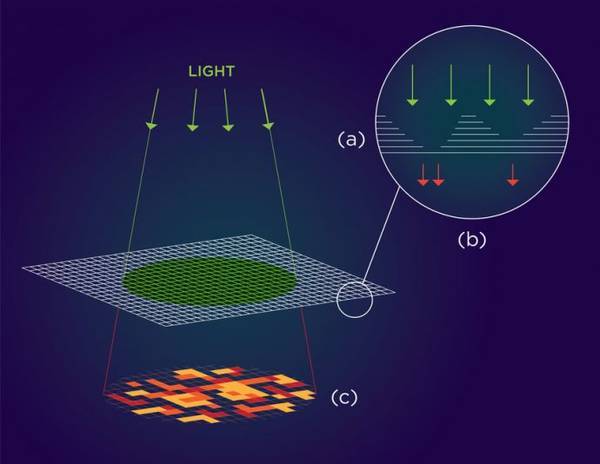
The Ultimate Defense Against Hackers May Be Just A Few Atoms Thick
"The next generation of electronic hardware security may be at hand as researchers at New York University Tandon School of Engineering introduce a new class of unclonable cybersecurity security primitives made of a low-cost nanomaterial with the highest possible level of structural randomness. Randomness is highly desirable for constructing the security primitives that encrypt and thereby secure computer hardware and data physically, rather than by programming. In a paper published in the journal ACS Nano, Assistant Professor of Electrical and Computer Engineering Davood Shahrjerdi and his NYU Tandon team offer the first proof of complete spatial randomness in atomically thin molybdenum disulfide (MoS2). The researchers grew the nanomaterial in layers, each roughly one million times thinner than a human hair. By varying the thickness of each layer, Shahrjerdi explained, they tuned the size and type of energy band structure, which in turn affects the properties of the material. “At monolayer thickness, this material has the optical properties of a semiconductor that emits light, but at multilayer, the properties change, and the material no longer emits light." [...]

Fujitsu Laboratories Develops Pure Carbon-Nanotube Sheets with World's Top Heat-Dissipation Performance
"Fujitsu Laboratories Ltd. today announced the successful development of a high-thermal-conductive carbon-nanotube sheet with the world's top heat dissipation performance. The sheet is composed of pure(1) carbon nanotubes, oriented perpendicularly, resulting in exceptional thermal conductivity and heat resistance. The rapidly growing prevalence of electric vehicles has created demand for onboard power modules to control high-voltage electric power with low power demands of their own and high breakdown voltage, while at the same time needing to maintain reliability despite the high-temperature operations that come with compact modules. Silicon carbide (SiC), which has low power consumption and a high breakdown voltage, is being used as an alternative for silicon, but in order to operate reliably at temperatures of 200°C or higher, heat needs to be removed efficiently from SiC devices. Fujitsu Laboratories has now developed a process for manufacturing carbon nanotubes, a material known for its high thermal conductivity in a cylindrical structure, and in which the combination of process temperature and pressure is precisely controlled to grow dense, uniform arrays of perpendicularly oriented carbon nanotubes. In order to be used for removing heat from SiC power modules, Fujitsu Laboratories has also developed a sheet-forming technology in which oriented-growth carbon nanotubes are subjected to heat treatment at temperatures above 2000°C, creating sheets that are easy to transport." [...]
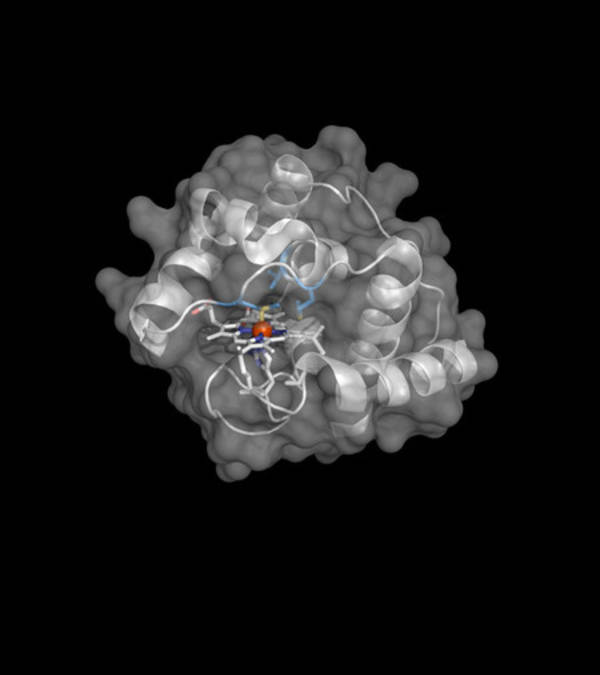
Teaching Life a New Trick: Bacteria Make Boron-Carbon Bonds
"In another feat of bioengineering, Caltech's Frances Arnold, the Linus Pauling Professor of Chemical Engineering, Bioengineering and Biochemistry, and her team have created bacteria that can, for the first time, make chemical compounds containing bonds between boron and carbon. Before now, such boron-carbon bonds came only from the laboratories of chemists and could not be produced by any known life form. The finding is part of a new wave in synthetic biology, in which living organisms are taught to make chemical compounds needed for pharmaceuticals, agricultural chemicals, and other industrial products. Last year, Arnold's team also engineered bacteria to produce molecules with silicon-carbon bonds, called organosilicon compounds, which can be found in everything from pharmaceuticals to semiconductors. By using biology, researchers can potentially make the chemical compounds in "greener" ways that are more economical and produce less toxic waste, according to Arnold. The results are published in the November 29 online edition of the journal Nature." [...]
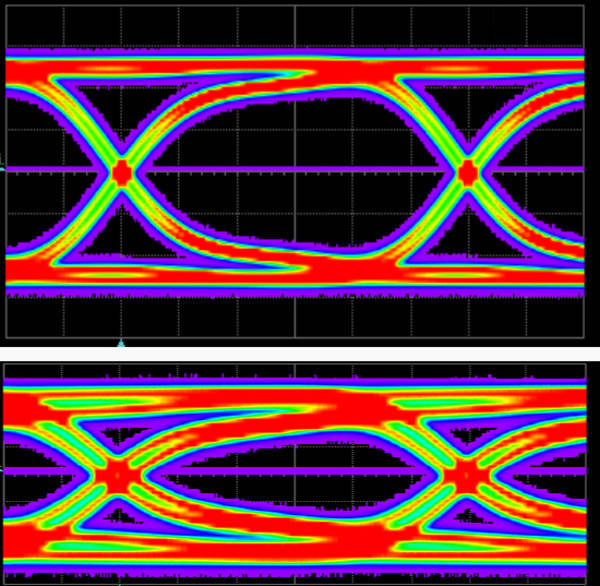
Microwave-Based Test Method Can Help Keep 3-D Chip Designers’ Eyes Open
"Researchers at the National Institute of Standards and Technology (NIST) have invented a new approach to testing multilayered, three-dimensional computer chips that are now appearing in some of the latest consumer devices. The new method may be the answer the semiconductor industry needs to quickly assess the reliability of this relatively new chip construction model, which stacks layers of flat circuitry atop one another like floors in a building to help make chips ever-faster and packed with features. The approach overcomes the limitation of conventional chip-testing methods on the so-called 3-D chips, which include many thin horizontal “floors” connected to one another by vertical pathways called through-substrate vias, or TSVs. These TSVs are essential to the operation of 3-D chips, which have become commercially viable only in the past few years after decades of sustained development effort by the industry. With NIST’s new testing method, chip designers may have a better way to minimize the effects of “electromigration,” a perennial cause of chip failure rooted in the wear and tear that relentless streams of flowing electrons inflict upon the fragile circuitry that carries them. The NIST approach could give designers a quicker way to explore the performance of chip materials in advance, thereby providing more, and almost real-time, insight into what materials will best serve in a 3-D chip." [...]
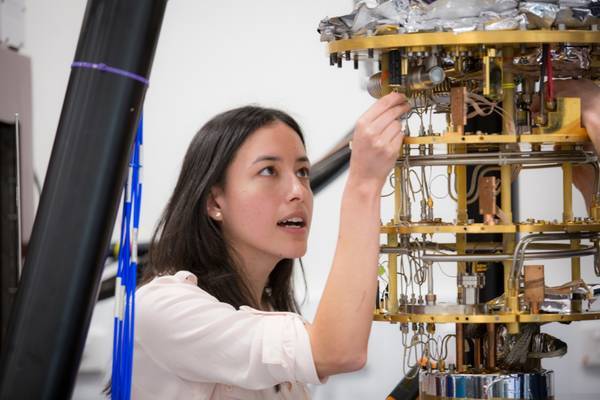
Key component to scale up quantum computing invented
"Sydney team develops microcircuit based on Nobel Prize research Invention of the microwave circulator is part of a revolution in device engineering needed to build a large-scale quantum computer. A team at the University of Sydney and Microsoft, in collaboration with Stanford University in the US, has miniaturised a component that is essential for the scale-up of quantum computing. The work constitutes the first practical application of a new phase of matter, first discovered in 2006, the so-called topological insulators. Beyond the familiar phases of matter - solid, liquid, or gas - topological insulators are materials that operate as insulators in the bulk of their structures but have surfaces that act as conductors. Manipulation of these materials provide a pathway to construct the circuitry needed for the interaction between quantum and classical systems, vital for building a practical quantum computer. Theoretical work underpinning the discovery of this new phase of matter was awarded the 2016 Nobel Prize in Physics." [...]

High-speed Quantum Encryption May Help Secure The Future Internet
"Recent advances in quantum computers may soon give hackers access to machines powerful enough to crack even the toughest of standard internet security codes. With these codes broken, all of our online data -- from medical records to bank transactions -- could be vulnerable to attack. To fight back against the future threat, researchers are wielding the same strange properties that drive quantum computers to create theoretically hack-proof forms of quantum data encryption. And now, these quantum encryption techniques may be one step closer to wide-scale use thanks to a new system developed by scientists at Duke University, The Ohio State University and Oak Ridge National Laboratory. Their system is capable of creating and distributing encryption codes at megabit-per-second rates, which is five to 10 times faster than existing methods and on par with current internet speeds when running several systems in parallel. The researchers demonstrate that the technique is secure from common attacks, even in the face of equipment flaws that could open up leaks." [...]
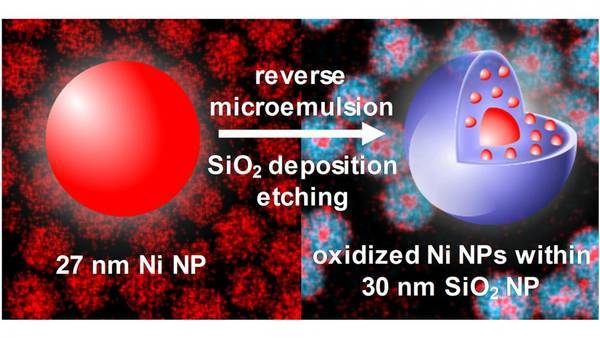
Researchers Inadvertently Boost Surface Area of Nickel Nanoparticles for Catalysis
"Researchers from North Carolina State University and the Air Force Research Laboratory have discovered that a technique designed to coat nickel nanoparticles with silica shells actually fragments the material – creating a small core of oxidized nickel surrounded by smaller satellites embedded in a silica shell. The surprising result may prove useful by increasing the surface area of nickel available for catalyzing chemical reactions. “Nickel is noteworthy for its widespread applications in catalysis,” says Joe Tracy, an associate professor of materials science and engineering at NC State and corresponding author of a paper on the work. “One reason you’d want to coat nickel nanoparticles in porous silica is to embed them in a neutral substrate to maintain their efficiency as catalysts in chemical reactions. So the fact that this process could increase their surface area at the same time could prove to be beneficial.” The researchers employed a widely used approach called reverse microemulsion, or reverse micelle, to apply a silica coating to nickel nanoparticles that were approximately 27 nanometers (nm) in diameter. But they found that the technique results in an oxidized nickel core that was 7 nm in diameter, surrounded by oxidized nickel satellites only 2 nm in diameter – all enclosed in a silica shell that was 30 nm in diameter." [...]
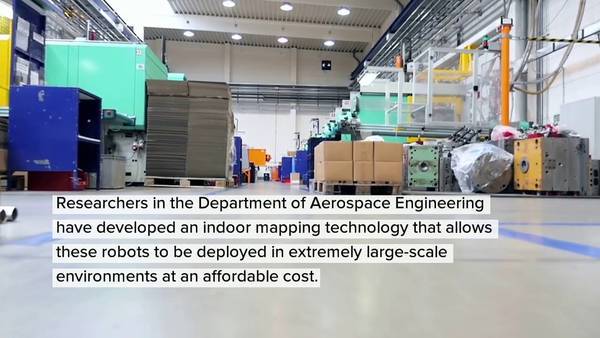
Mapping the way for autonomous robots
"A big problem for autonomous robots is the challenge of navigating large environments that are void of a global positioning system (GPS). Saurav Agarwal, doctoral student, and Dr. Suman Chakravorty, associate professor, from the Department of Aerospace Engineering and The Estimation Decision and Planning Lab at Texas A&M University have developed an indoor mapping technology that allows autonomous robots to be deployed in extremely large-scale environments (e.g., Amazon warehouses that are millions of square feet in size) at an affordable cost. Agarwal and Chakravorty discovered a major gap in automation for warehousing and logistics, and received a $50,000 Innovation Corps grant (I-Corps) from the National Science Foundation to research commercial needs for their technology. Their goal for the research was to develop tools and methods to enable robust long-term autonomy for mobile robots. This I-Corps project is a result of research into the problem of Simultaneous Localization and Mapping (SLAM). In SLAM, a robot is not given prior knowledge of its environment; it must use its sensory data and actions to simultaneously build a map of its environment and position itself within its uncertain map." [...]

How the Earth Stops High-Energy Neutrinos in Their Tracks
"Neutrinos are abundant subatomic particles that are famous for passing through anything and everything, only very rarely interacting with matter. About 100 trillion neutrinos pass through your body every second. Now, scientists have demonstrated that the Earth stops energetic neutrinos—they do not go through everything. These high-energy neutrino interactions were seen by the IceCube detector, an array of 5,160 basketball-sized optical sensors deeply encased within a cubic kilometer of very clear Antarctic ice near the South Pole. IceCube’s sensors do not directly observe neutrinos, but instead measure flashes of blue light, known as Cherenkov radiation, emitted by muons and other fast-moving charged particles, which are created when neutrinos interact with the ice, and by the charged particles produced when the muons interact as they move through the ice. By measuring the light patterns from these interactions in or near the detector array, IceCube can estimate the neutrinos’ directions and energies." [...]
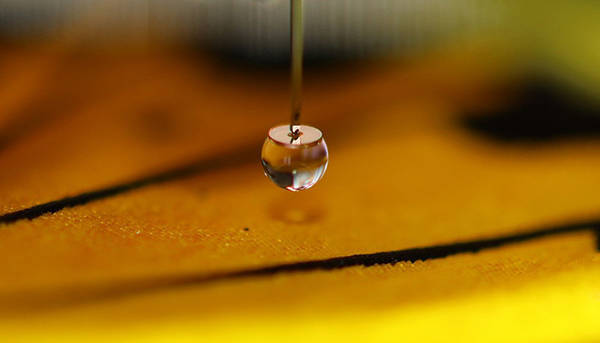
New microscope sets a record for visualizing surface wetting properties
"The microscope is 1000 times more precise than current techniques, allowing the creation of wetting maps as a new concept for hydrophobic surface characterization. Wetting is an everyday phenomenon that represents how well liquid spreads on a surface. When water comes into contact with an extremely water-repellent, or ‘superhydrophobic’ surface, droplets bead up and roll off easily. Aalto University researchers have developed a measurement technique called Scanning Droplet Adhesion Microscopy (SDAM) to understand and characterize the wetting properties of superhydrophobic materials. “Our novel microscope will promote the understanding of how wetting emerges from surface microstructures. The measuring instrument can also detect microscopic defects of the surface, which could allow coating manufacturers to control the quality of materials." [...]
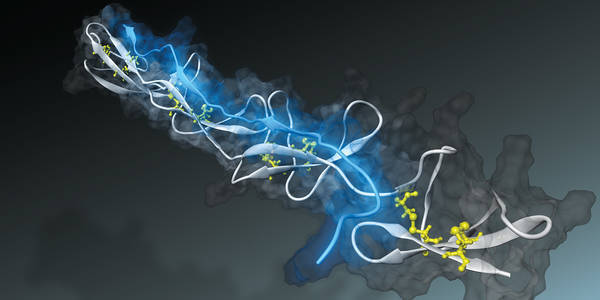
Nano-sensor measures tension of tissue fibres
"Computer simulations have helped a team of researchers led by ETH professor Viola Vogel to develop a peptide that is able to detect the tensional state of tissue fibres. This paves the way for completely novel research approaches in medicine and pharmacology. Bacteria are able to attach themselves to tissue fibres with the aid of a ‘nano-adhesive’. Just how they achieve this was investigated a few years ago by Viola Vogel, Professor of Applied Mechanobiology, using computer simulations at CSCS. The researchers simulated how the bacterial nano-adhesive – a peptide thread with several binding sites strung together like pearls – adheres to what are called fibronectin fibres. These form part of the fibrous network in which cells are embedded." [...]
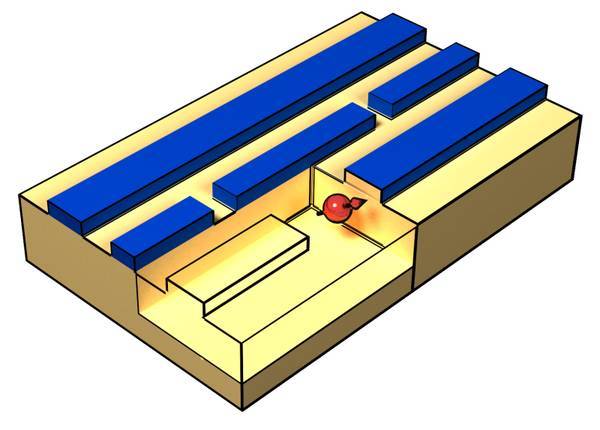
Pushing the limit
"Applying spin-based quantum sensors, a new detector protocol was developed by the NIM scientist Dr Friedemann Reinhard and his team. Compared to state-of-the-art detectors, considerably higher frequencies can be detected, potentially even single photons and phonons. Spin-based quantum sensors can detect high-frequency signals – up to the GHz range. NIM-scientist Opens external link in new windowDr Friedemann Reinhard and his team are one of the two first groups to present such a measurement protocol and they published their results recently in Opens external link in new windowNature Communications, together with similar Opens external link in new windowresults of a team led by the Universität Ulm. “It is a new approach to utilize single solid-state spins as highly sensitive detectors in the high-frequency range. On this basis, single microwave photon and single phonon detectors, relevant for sensors, radio astronomy and quantum communications, could be developed.” Reinhard summarizes their advancement." [...]

Superconducting qubit 3d integration prospects bolstered by new research
"Researchers from Google and the University of California Santa Barbara have taken an important step towards the goal of building a large-scale quantum computer. Writing in the journal Quantum Science and Technology, they present a new process for creating superconducting interconnects, which are compatible with existing superconducting qubit technology. The race to develop the first large-scale error-corrected quantum computer is extremely competitive, and the process itself is complex. Whereas classical computers encode data into binary digits (bits) that exist in one of two states, a quantum computer stores information in quantum bits (qubits) that may be entangled with each other and placed in a superposition of both states simultaneously. The catch is that quantum states are extremely fragile, and any undesired interaction with the surrounding environment may destroy this quantum information. One of the biggest challenges in the creation of a large-scale quantum computer is how to physically scale up the number of qubits, while still connecting control signals to them and preserving these quantum states." [...]

SLAC-led Study Shows Potential for Efficiently Controlling 2-D Materials With Light
"In experiments with the lab’s ultrafast ‘electron camera,’ laser light hitting a material is almost completely converted into nuclear vibrations, which are key to switching a material’s properties on and off for future electronics and other applications. Materials that are only a few atomic layers thick have generated a lot of excitement in recent years. These 2-D materials can have intriguing properties, such as extraordinary mechanical strength and superior electrical and heat conductivity, and could benefit a number of next-generation applications, including flexible electronics, data storage devices, solar cells, light-emitting diodes and chemical catalysts. Researchers also think they may be able to customize the properties of these materials by using light pulses to rapidly switch them from one state, or phase, to another, for example from an insulating to a conducting state. However, the ability to do this depends on how efficiently the light’s energy is transferred to the material’s atomic nuclei. Now, a team led by researchers from the Department of Energy’s SLAC National Accelerator Laboratory has demonstrated for the first time that the energy transfer is very fast and extremely efficient." [...]
Modelos 3D
Com a disponibilidade de ferramentas que permitem dar azo a nossa imaginação na criação de peças 3D e espaços como o thingiverse para as publicar, esta rubrica apresenta alguns modelos selecionados que poderão ser úteis.

Parametric Box Maker
"This is yet another parametric box maker. The exciting new difference with this one is that it's intended to be used as an OpenSCAD library. This thing is actually only a demo of the basic functionality it has. One of the main features this has is that it can give a 3D preview of the box as well as lay out the files for cutting complete with all the holes/additions you've made in the box in both views. This allows for verifying that there's enough clearance for parts / buttons / etc. in the 3D view while also laying out the same cuts for the 2D cut." [...]
Documentação
A documentação é parte essencial do processo de aprendizagem e a Internet além de artigos interessantes de explorar também tem alguma documentação em formato PDF interessante de ler. Todos os links aqui apresentados são para conteúdo disponibilizado livremente pelo editor do livro.
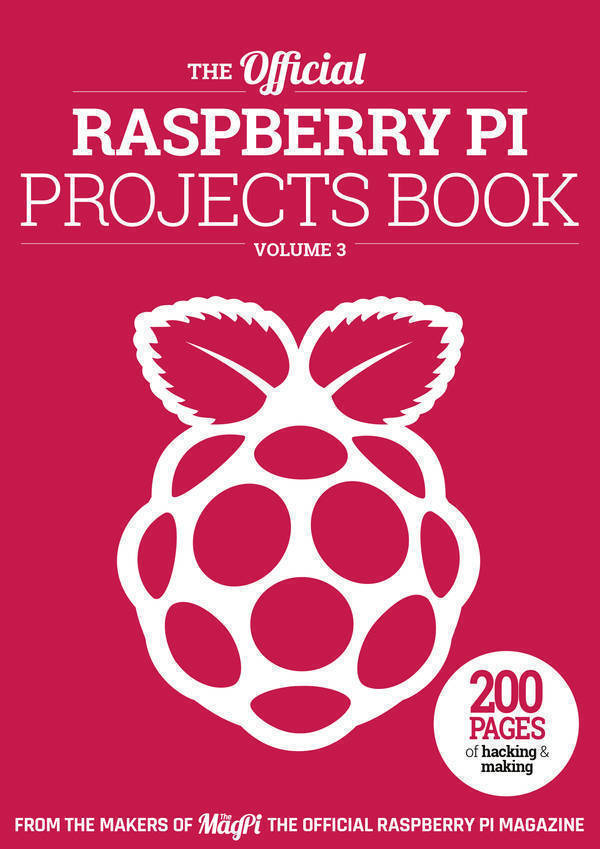
The Official Raspberry PI Projects Book Volume 3
"The Raspberry Pi is becoming a household name. It’s ubiquitous in the maker community, helped revolutionised computing the world over, and is now the third best-selling computer of all time. Get to know everyone’s favourite credit-card sized computer in our latest 200 page projects book! - Get started with Python and learn to program on Raspberry Pi - Be inspired by projects created by community members - Find out new and amazing uses for your Pi with expert tutorials - Get the low down on the best Raspberry Pi add-ons and tech - And much, much more! " [...]
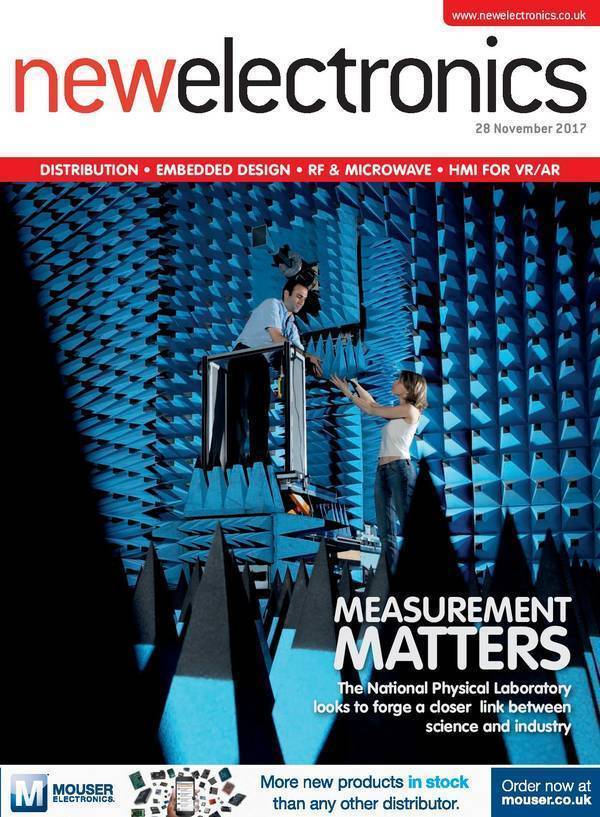
newelectronics de 28 Novembro 2017
"New Electronics is a fortnightly magazine focusing on technological innovation, news and the latest developments in the electronics sector. Downloadable as a digital page turner or pdf file, or offered as a hard copy, the New Electronics magazine is available in a format to suit you. " [...]
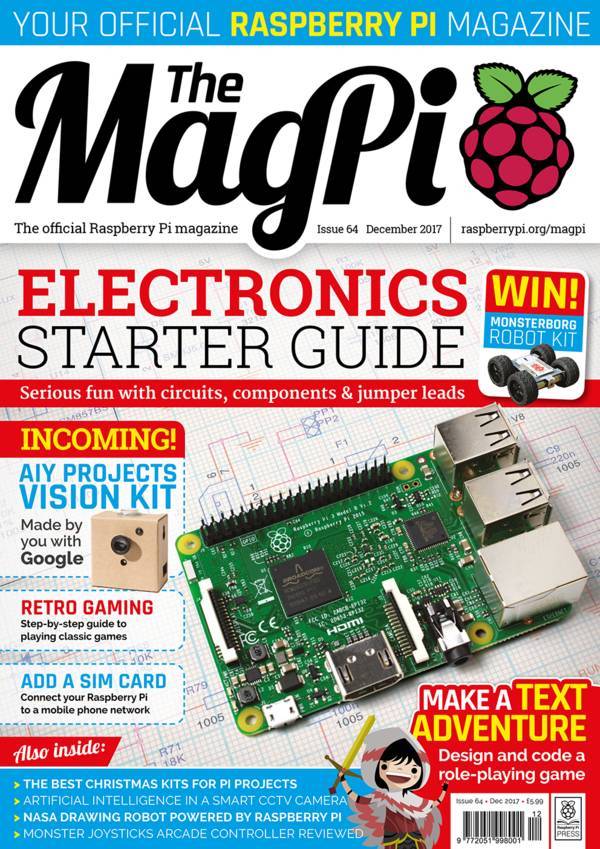
The MagPI 64
"Electronics Starter Guide Everybody knows the Raspberry Pi is a coding tool. It’s inspiring a whole new generation of students and developers. But the Raspberry Pi is much more than that. Coding on a Raspberry Pi has purpose, and that purpose is to control hardware and make things that whizz, whirr, and do stuff. If you’re new to this. We’ve got an amazing Electronics Starter Guide this month." [...]
Projetos Maker
Diversos Projetos interessantes.

Make a Motorised Camera Slider
"What is up guys, In this instructable I will be making a very simple and cheap motorized camera slider for less than 15$. Hope you are gonna like it :)" [...]

XY Plotter Drawing Robot | Arduino | Polargraph
"In this tutorial we will learn how to make X Y Plotter Drawing machine. With Drawing Robot you can draw images on wall, panel or A4 paper. You can print pictures or print text. All required hardware for this project are listed below. We will learn how to install and use the Polargraph program for robot control. Video editing of this project took a lot of time." [...]
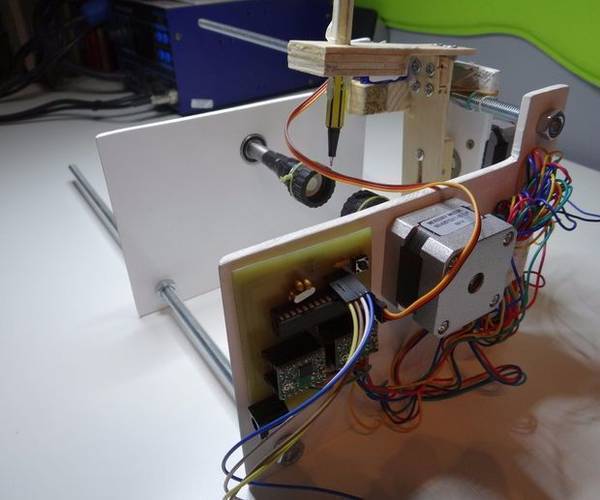
DIY Arduino Controlled Egg-Bot
"In this instructables I will show you how to make your own Egg-Bot controlled with Arduino. I wanted to make it before but I thought it is too hard for me but I was wrong. It's easy to build so for sure everyone can do it. " [...]

Automatic 360° Photography Turntable
"What’s a photography turntable? Photography turntables are round docks used by photographers to take images or videos of objects or people in 360°. The idea is that the object itself sits in the exact middle of the plate, while it spins, either manually or automatically, so you can get a good shot of the product from every angle. Why we built it? Sometimes we need to take images of the components we add to circuito.io, and a photography turntable is useful for taking pack-shots from different angles. Also, we like to take good photos of the circuits and projects we build." [...]

Fox Advisor
"Smart Box to improve customer satisfaction in restaurants which allows clients to rate the service via Sigfox and ThingSpeak IoT platform Fox Advisor: a rating a day keeps the failure away Fox Advisor is a Sigfox-based project to be used in restaurants and franchises. It consists of a Smart Box (governed by Arduino MKR FOX 1200) installed in the centre of the table which improves the customer satisfaction by enabling direct feedback from clients to restaurant managers and other possible clients on the Internet. Fox Advisor uses the global Sigfox Network to send customers’ ratings to Sigfox-backend and, there, a custom HTTP callback sends these data to ThingSpeak IoT platform, incluying relevant information such as restaurant identifier or location. Benefits for customers and restaurants The most remarkable advantages of Fox Advisor are: - 140 packets per table is more than sufficient to send the variety of customer feedback generated along a whole day. Sigfox can increase the added value of the restaurant thanks to its low power consumption. - Sigfox provides global coverage for entire countries, which allows restaurants located in both urban and rural areas to use the Fox Advisor rating platform with no wireless constraints." [...]
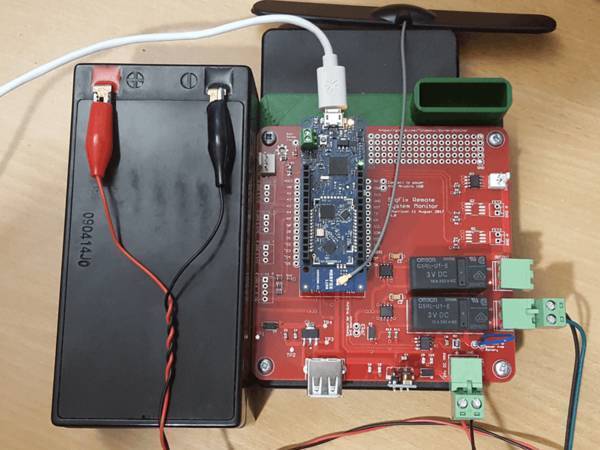
Remote System Monitor
"Monitor a remote system (battery, power usage and sensors) with this Arduino MKR FOX 1200-based, Sigfox-connected solution. My garage has no mains electricity or WiFi and so I use an old car battery for power and LED lighting, I'd like to know when the battery is getting flat, or if the door is open without having to go out to the garage. I'm sure many remote/agricultural buildings have similar problems where it's not feasible to run a mains supply and so they rely on battery power, maybe for powering the electric fences, small low power pumps to keep a leak from flooding or simple occasional lighting. This project provides a way to monitor the battery level and power usage, along with sensor inputs and provide switchable outputs as well as a 5v USB power socket. " [...]
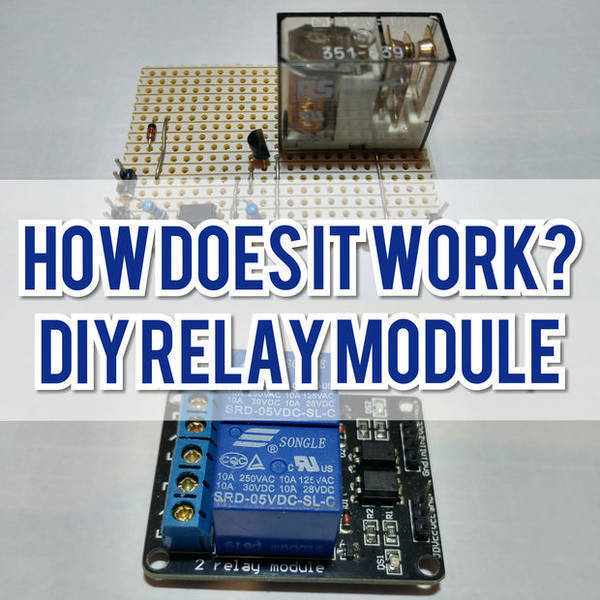
How Does It Work: DIY Relay Modules
"After looking through many instructables it's clear that many makers love to use the pre-assembled relay modules to switch large loads or mains voltages using their Raspberry Pi or Arduino. These can be bought from places like eBay for as little as 2. There's many tutorials on how to use them with your microcontroller, and even how to make your own. But none explain in detail how it works, the importance of each component or why a particular value was selected. In this instructable I wanted to show you how you can easily make your own module and how to calculate the correct component values. A word of warning, working with mains electricity is dangerous and can be deadly." [...]
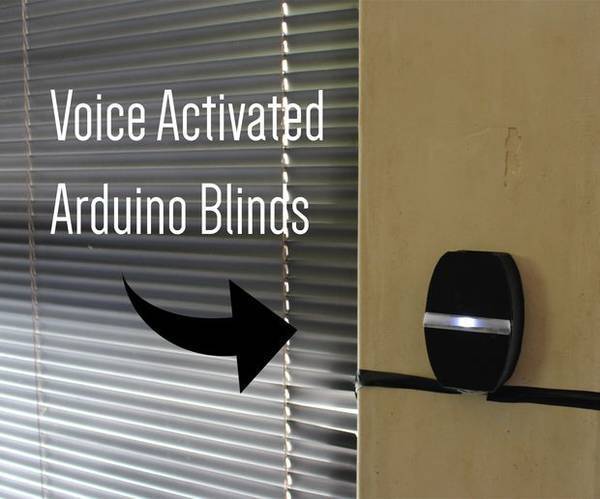
Voice Activated Arduino Blinds
"A while ago I made an Instructable where I added a servo and Bluetooth device to my door lock letting me control it with my phone like an addict I just can't stop adding Bluetooth to stuff and so in this project I'm going to show you how to make Bluetooth controlled blinds with some voice activation features. Let's get started! " [...]
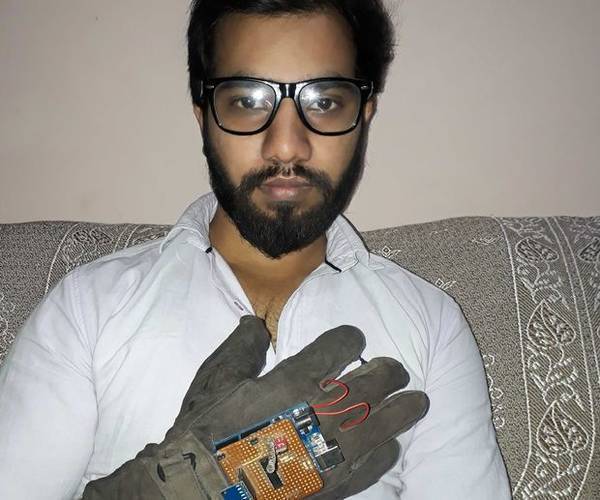
Gesture Controlled Robotic Car
"Hi, This is my 13th instructable and in this tutorial, I'm going to show you, how to build a simple Gesture Controlled Robotic Car by using Arduino, accelerometer and RF modules. Before getting started just hit the vote button because i need a new laptop for my projects i think you guyzz help me... let's start with component we need" [...]
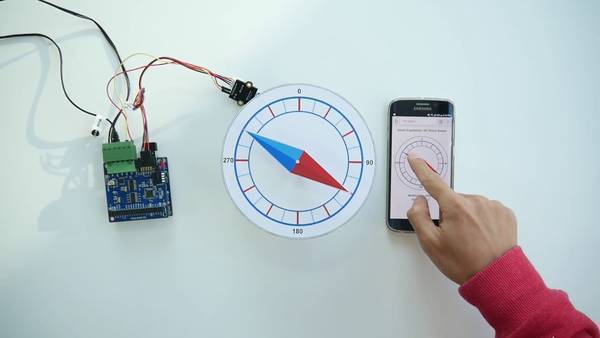
Control Position of DC Motor via Web Using PID Controller
"This project shows how to control the position of DC motor via Web using a PID controller. When user access webpage of PHPoC Blue from a web browser on Smart Phone or PC, a WebSocket connection will be created between PHPoC Blue and web browser. WebSocket connection allows to real-time exchange data between web browser and PHPoC Blue without reloading webpage. When user rotates the needle on webpage, the rotated angle will be send to PHPoC Blue. PHPoC Blue convert angle to the equivalent position (unit is pulse), and then use PID algorithm to rotate DC motor the equivalent position. PID library for PHPoC is available here." [...]
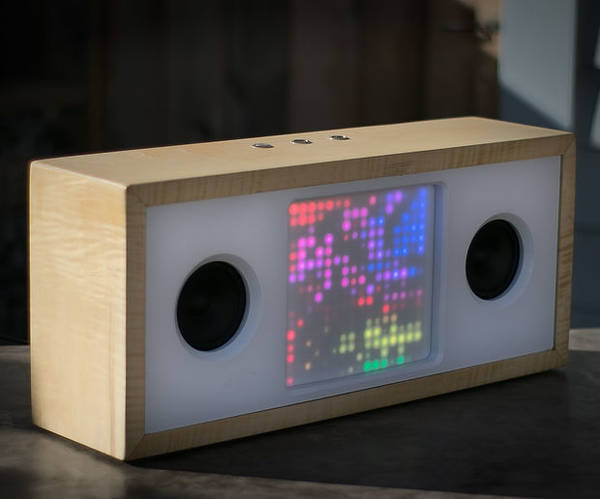
Bluetooth Speaker W/ Music-Reactive LED Matrix
"I designed and built a DIY Bluetooth Speaker with an integrated LED matrix. The LED matrix includes a number of different visualization modes, including a fireplace mode, an abstract moving art mode, and several that react to the music via a microphone inside of the speaker box. I havent seen any other product designed for the home, which marries sight and sound in this way. The idea for this project came about in a somewhat unorthodox way. I wanted to build something for several friends expecting newborns. I wanted a gift that would help their children develop neurologically, and a gift that they wouldnt outgrow." [...]
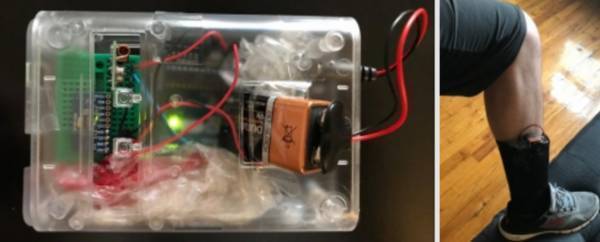
Cycler433: exercise bike racing with a wireless wearable
"Spin classes with competitive racing sound awesome. But rather than working to push a bike output number up, I wanted to to compete in a game like MarioKart or TrackMania. That might be ridiculously awesome, right? So I made a little gadget worn on the ankle with a recumbent exercise bike to do that. Details are below to make one yourself. This wireless gadget (‘Cycler433’) tracks ankle motion so users can ride most any exercise bike and control racing games on a computer." [...]
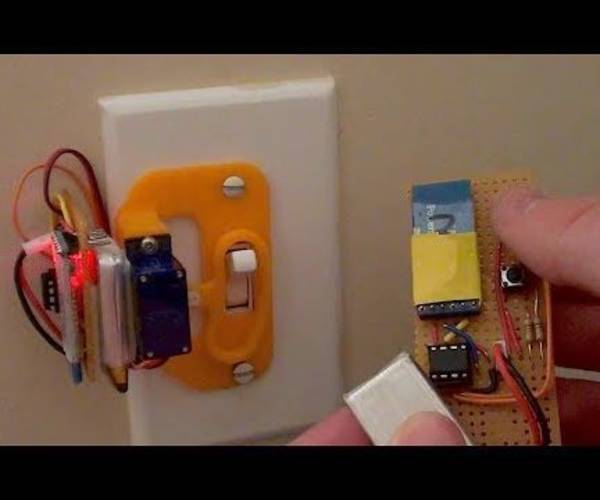
Remote Control Bluetooth Light Switch
"This will be the first project in a series entitled: "Optimised Laziness: Over Engineered Solutions to Remarkably Trivial Problems" Ever been lying in bed late at night reading or watching Netflix on your laptop? The worst part is of course crawling out of bed to turn off the lights. Here is an over engineered solution to that remarkably trivial problem. As a side not: If you have the confidence and experience to play with your mains power, a much nicer looking solution would be to use a relay and wire it in behind the light switch in the wall. However since I am renting my place I don't think this would make my landlord too happy! " [...]
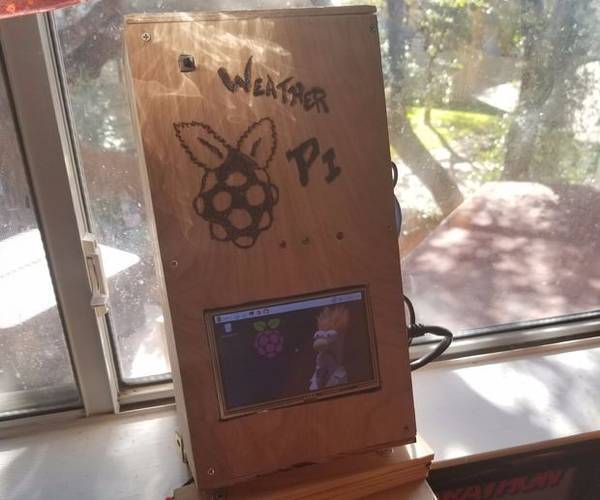
Weather Camera Raspberry Pi
"A while back I wanted a project that combined the following: Raspberry PiPython CodeLive statusIndications of activitySo I decided to build a Raspberry Pi box that would take photos of my backyard at scheduled intervals, indicate when the photos were being taken, and finally push that information out to Twitter for review. List of electrical supplies: Raspberry PiRaspberry Pi breakout board (for LED indication)5 inch LCD for interactive display when neededRaspberry Pi Camera (5 megapixel)HDMI cableCAT 5 cableDC power pack for the Pi24-26 gauge wire or jumpers3 LEDs3 10-100 Ohm resistors2 position push button switchList of case supplies: 1/4 pine panels cut to size of the projectTop, Bottom, and Front and Back are made from the same type of wood in my example1/4 by 1-inch wide pine boards were used to make the left and right sides of the case.Brace for window mount was made from scraps I had in the workshop.Misc: Screws for caseHot glue for mountingSolder and flux for resistor / LED connectionsTools: Miter or table sawJig Saw or DremelSander or oscillating tool with sanding head Soldering gunWood burnerRasps, Files, Chisels as needed to make the smaller holes in the case. " [...]

Not Just an Hour Timer
"IntroductionI was in need of an Hour timer that could be started and stopped with a press of a button. When I got to building and coding it I thought that I could do more than a simple hour timer. I cobbled together a timer that has a range from 1 minute to an hour and a half and still only uses 1 button to control it. I didnt want to use an Arduino for the final product but still prototyped it on the Arduino. I used an ATTINY85 for the final product. " [...]
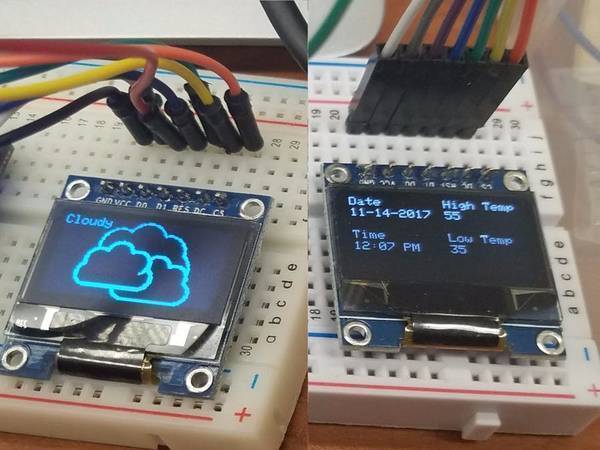
Photon Weather Display
"Particle project using two Photons to connect to Weather Underground and display relevant weather information. In deciding on our photon project we wanted to create something we ourselves would use. With this project we were able to create two displays to show relevant weather data that we would need to know before heading out for the day. We decided the high and low temperatures as well as the current conditions would be the best options. We integrated Weather Underground by using a web-hook to pull the weather data. One display shows an image depicting the current weather (Raining, Sunshine, Snowing, Cloudy), while the other shows the date, time, as well as high and low temperatures." [...]
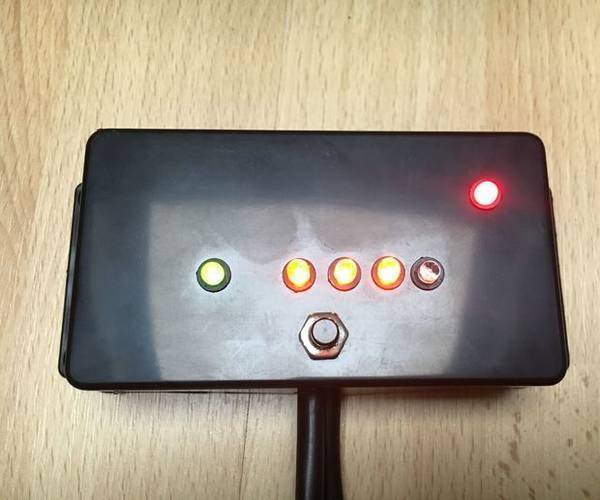
Infra-Red Panel Timer
"In one of the rooms upstairs in my house I have an Infra Red panel. When I am in that room and I switch on this panel I sometimes forget to switch it off, which is a waste of valuable energy. In order to prevent this, I built this Infra Red Panel Timer. Of course you can use this circuit for switching off other devices after a certain timeout. The operation of this timer is simple. When you press a push button once, one LED is turned on, the Infra-Red panel is switched on and a timer of 30 minutes is started." [...]
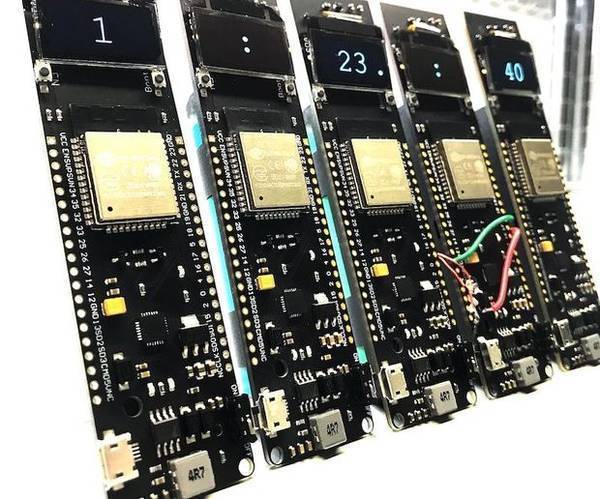
ESP32 Clock Using WiFi, ESP-NOW, & Cellular
"This is a ESP32 based wifi clock I made for the wireless contest. I decided to make this clock overly wireless so it uses three different forms of wireless communication(WiFi, ESP-NOW, & Cellular). The phone is connected to a cell tower and acting as a wifi hotspot. The first esp32 is connected to the phone and displaying the hour it pulls from an ntp server on the OLED. The two colons are connected to the phone and transmit the minutes and seconds to the other units using the esp32s own communication protocol called ESPNOW. The first colon is transmitting the minutes and the second colon is transmitting the seconds." [...]
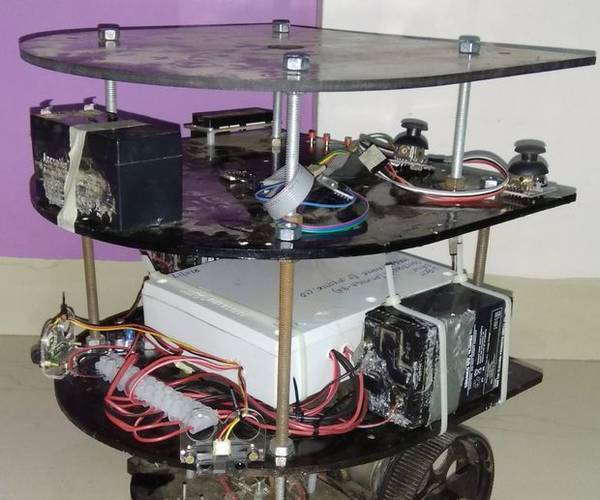
Let's Make Robot - U-Bot
"This is the 1st post regarding with Robotics. In this post I will guide you to make your own robot step by step. Robot includes Mechanical design, electronics circuit design, and firmware development. Robot is a Machine specially one programmable by computer capable of carrying out complex series of action automatically This robot i used to build to learn some basic aspects of robotics like sensing, processing, controlling. " [...]

Automated Bonsai Watering (without Arduino)
"This Instructable shows you how to make an automated watering system for Bonsai trees or plants (see video) yourself. In contrast to a lot of systems that you can buy, this system does not need a water-connection. The water is pumped from a small tank to make it ideal for indoor use of small plants. The system is using standard industrial items like a digital timer switch where not programming or coding is needed (without Arduino). Main components are the following: Timer (Digital weekly programmable time switch) Peristaltic pump DC to DC step down converter Power adapterIn addition, this Instructable shows you how to construct a fast and easy to build but nice-looking housing. The method described here is using cardboard in combination with preglued edging strips as the main construction material (like an exoskeleton of an insect)." [...]
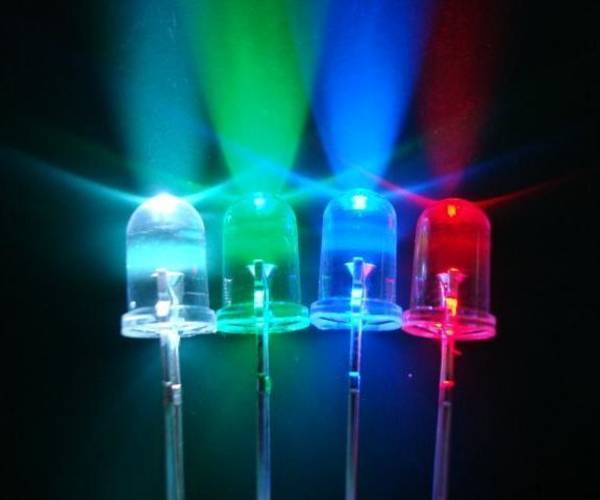
LED Control Using ESP8266 WiFi Module- Internet of Things
"The ESP8266 is a low-cost Wi-Fi chip with full TCP/IP stack and MCU (microcontroller unit) capability produced by the Shanghai-based Chinese manufacturer, Espressif Systems. The chip first came to the attention of western makers in August 2014 with the ESP-01 module, made by a third-party manufacturer, Ai-Thinker. This small module allows microcontrollers to connect to a Wi-Fi network and make simple TCP/IP connections using Hayes-style commands. However, at the time there was almost no English-language documentation on the chip and the commands it accepted.The very low price and the fact that there were very few external components on the module which suggested that it could eventually be very inexpensive in volume, attracted many hackers to explore the module, chip, and the software on it, as well as to translate the Chinese documentation.The ESP8285 is an ESP8266 with 1 MiB of built-in flash, allowing for single-chip devices capable of connecting to Wi-Fi. " [...]

Mystery Box: NeoMatrix Mk I
"Imagine all of the things you can do with a NeoMatrix Mk I, the Interface of Infinite Possibilities! From puzzle box to step sequencer, from NeoPixel programmer to crypto generator, from TV prop to phone phreaking device, the choices are endless. Think of it as a platform for experimentation and interface design. At the core of the NeoMatrix Mk I is a NeoSegment RGB LED character display, driven by an Adafruit Metro with a phone pad 3x4 button matrix and two knobs as inputs. It also has a built in piezo buzzer for sound indicators. The NeoMatrix Mk I has a lighted pushbutton that can be used for any purpose you like, and an externally accessible USB port for data and power." [...]

Energy Meter Logger
"Log your Energy Meter data using a Raspberry Pi and plot graphs of your energy consumption. In order to save energy it helps to know your consumption. To do this you can use Energy Meters to track the consumption of all connections in your distribution board. In this project seven 1-phase energy meters and three 3-phase energy meters are used to cover the complete distribution board. The Energy Meters are connected in series with the automatic fuses by an certified electrician. Its been verified to work with a Raspberry Pi 3 with a Linksprite RS485 shield and reading values from a SDM120 and SDM630." [...]
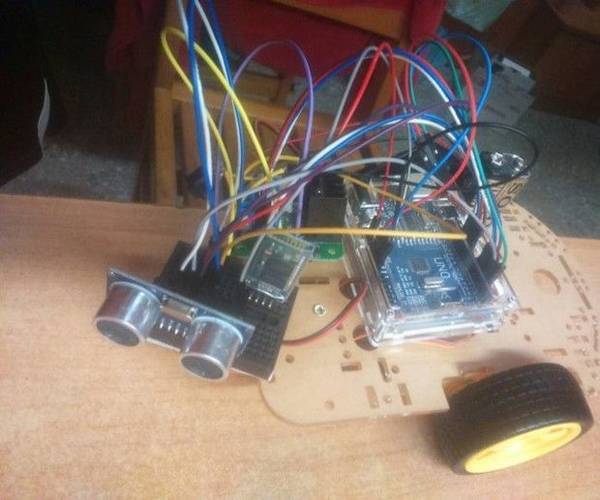
Arduino Ultrasonic Mobile Sonar
"Have you ever wondered how to explore the inside of pyramid? The deep dark area of ocean? A cave that has just been discovered? These places are considered unsafe for men to enter, therefore an unmanned machine is required to do such exploration, such as robots, drones, etc. usually equipped with cameras, Infrared cameras, etc. to view and map the unknown area live, but these requires certain light intensity, and the data acquired is relatively large." [...]
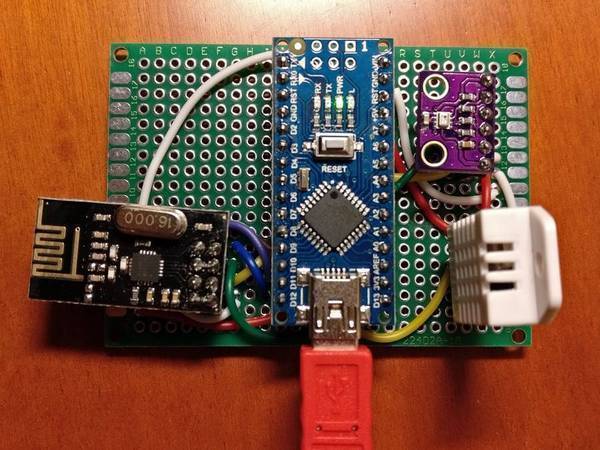
Arduino nRF24L01 Wireless Weather Station
"An Arduino Nano wireless weather station gathering data from DHT22 and a BME280 sensors and transmitting via nRF24L01 (2.4 GHz). Wireless Weather Station (nRF24L01 ) This is something I've build as part of a bigger project but it can be actually integrated into any kind of project which needs environmental sensing without much of a headache. " [...]
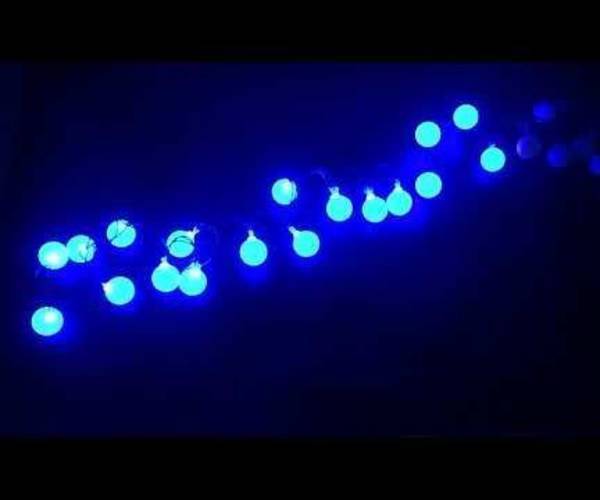
Sound Reactive WS2812 LEDs With Arduino and Sound Sensor
"Hello together, i made a sound reactive chain of WS2812 lights with table tennis balls and i control it with a sound sensor and an arduino. This is a easy project which beginners can do. " [...]

Endless Runner Game
"Popularized by mobile games like Temple Run, the endless running type of game is an extremely simplistic spin on the larger “platform” genre where a player has limited control over a character that is constantly moving forward. Flappy bird, while generally not considered a “running” game, was another popular infinite platform game with limited control over the character: users could only tap the screen to make the bird fly upward in order to navigate through obstacles while constantly moving to the right. We’re going to make our own endless runner game using an Arduino, button and character LCD. While not as visually appealing as Temple Run or Flappy Bird, it’s almost as addicting. " [...]
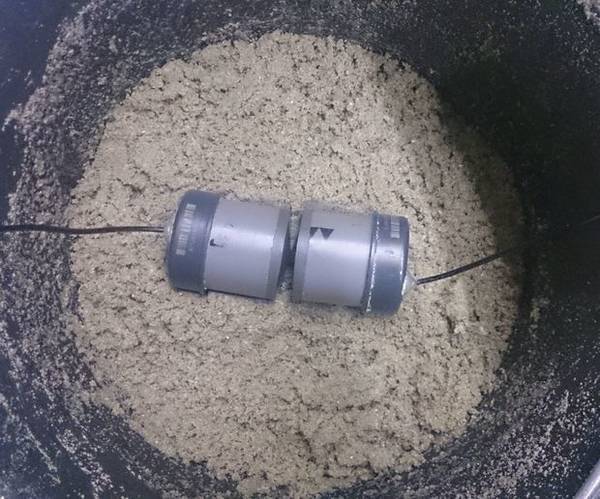
Measure Soil Moisture With Sound Amplitudes
"In this tutorial, we will explain how to make a device that measures soil moisture with sound amplitudes. " [...]
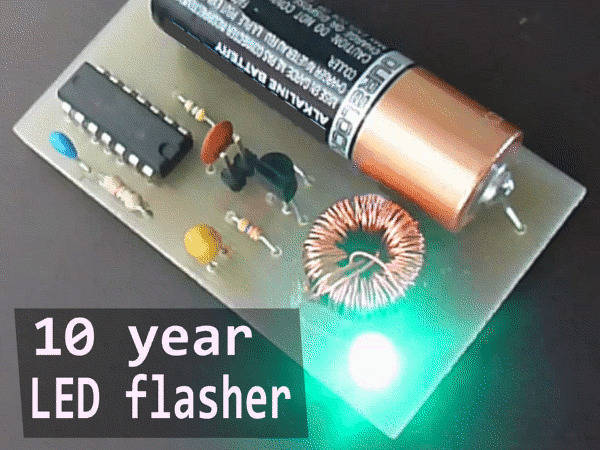
10 Year LED Flasher
"This LED flasher circuit will run for 10 years on a single 1.5V AA cell. Circuit is basically a "gated" blocking oscillator (joule thief) . IC1 CD4001 requires 3V and will not run from 1.5V (AA cell) when first connected. By shorting the header pins 1-2 momentarily, circuit oscillates and flyback voltage pulses (around 100KHz) appear at collector of transistor Q1. These pulses are rectified by LED and charge capacitor C3 while at the same time light is emitted by LED. Now, CD4001 is powered from C3 with adequate supply voltage, and produces short pulses (1.5mS) from monostable IC1-C & IC1-D at a rate of 1Hz (header pins disconnected) These pulses enable the oscillator during 1.5mS which charges C3 and lights LED at the same time." [...]
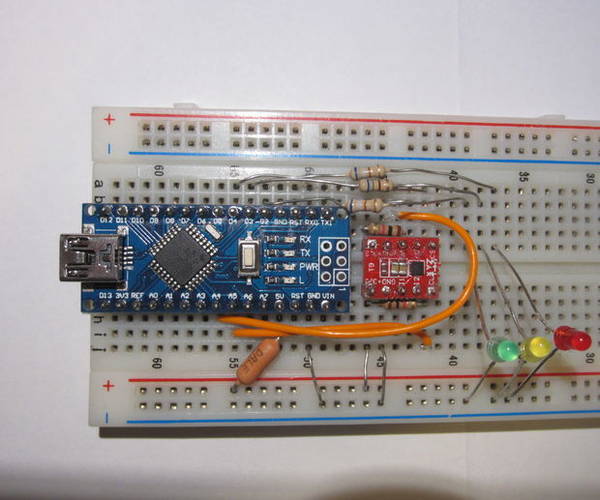
Basic Arduino Earthquake Detector
"Tiny9 is back and today we are going to make a simple Arduino earthquake detector. Please visit my instructable to interface with Tiny9's LIS2HH12 in the below link to set up the device so all you have to do is add a 3 resistors and 3 Light Emitting Diodes (LEDs) 3 Axis Accelerometer This instructable is considered beginner level with some experience with Arduino software. *This instructables does not reflect all the possible or correct acceleration changes for earthquakes in the richter scale" [...]

Hot Water Pump Recirculating Control System in a Solar Thermal Plate
" Introduction The purpose of this Instructable is to show how works my Hot water pump recirculating control system. I use a solar thermal plate, that save the hot water in a thermal tank, and I have installed at home a system that allow us enjoy of hot water once you open the pipe, without waste cold water waiting for the hot water, saving many liters of water. The problem is that if I allow the pump to work continuosly, it cold the water stored in the tank. So, I have desing a little system with Arduino that allow us control automatically the pump in relationship with temperature and also with remote control for custom activation of pump. Also, I can also control the internal resistence of thermal tank to heat water in cloudy days in winter. Moreover, current status of system is monitorizing by wifi with help of an ESP8266 module." [...]

Smart WareHouse/Control Shed/GreenHouse Monitoring
"Background: Humidity and temperature monitoring is a very important factor in salt/dairy warehouses, greenhouses as well as in homes. Instead of taking manual readings from digital meters I plan to make a device which will automatically stream real time statistics of warehouses (temperature/humidity) to the MyDevices Cloud. By this way, we can get real time result anywhere any time and take decisions on time to save products from damage. I am also adding one more feature in this system that is Gas & Smoke Monitoring which is good with respect to safety. In case of any fire or smoke you can get the alert on your mobile via MyDevices App or SMS/Email and make arrangements on the time to safe the warehouses,Greenhouses or home. " [...]
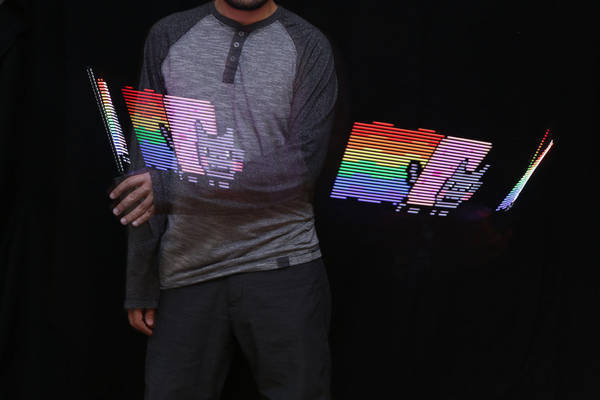
CircuitPython Painter - POV DotStar Pixel Painter!
"In this project we’ll show you how to build a POV LED wand. Adafruit DotStar’s deliver high speed PWM making them great for Persistence Of Vision. It’s powered by Adafruit’s Circuit Python, making it really easy to change and modify. The Adafruit Feather shows up as a USB drive so you can drag and drop the code. The handle and wand were designed to be 3D printed and houses all of the electronics. Persistence-Of-Vision As the LEDs move in space, they flash different parts of an image, building up an image in your brain." [...]
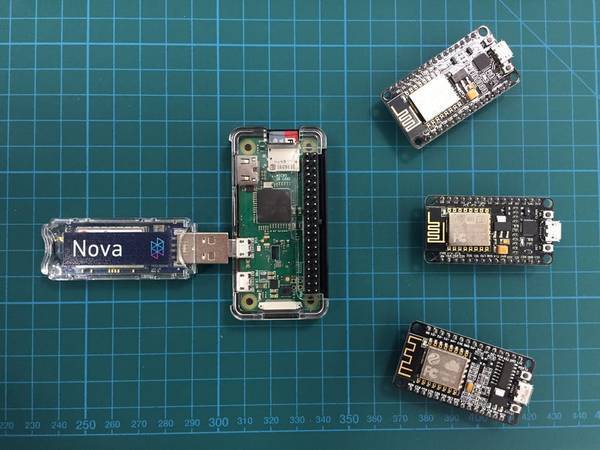
Raspberry Pi Cellular Gateway
"Tutorial and codebase walking through making a cellular backhauled gateway which collects data from WiFi devices. 1.0 Project Introduction Settle in and get ready for a ride because this tutorial covers a lot of the technical buzzwords around IoT. We’ll be making an IoT Gateway with a Raspberry Pi Zero W. To achieve this we’ll put the Pi’s built-in WiFi antenna into AP Mode (Access Point), or in other words, the Pi will be broadcasting its own wifi network for devices to connect. There will be some NodeMCUs that will connect to the Pi’s WiFi. To make communication between the nodes and Pi extremely simple we’ll use MQTT. The Pi will act as the MQTT Broker (server) which the nodes will publish data." [...]

BricKuber Project a Raspberry Pi Rubiks Cube Solving Robot
"The BricKuber can solve a Rubiks cube in about less than 2 minutes. The BricKuber is an open source Rubiks cube solving robot you can build yourself. We wanted to build a Rubiks cube solving robot with the Raspberry Pi. Rather than go for speed, we went with simplicity: if you have a Raspberry Pi, a BrickPi kit, and a standard LEGO Mindstorms EV3 or NXT Kit, you should be able to easily follow in our footsteps. The software is written in the Python programming language. You can see all the source-code on Github here." [...]
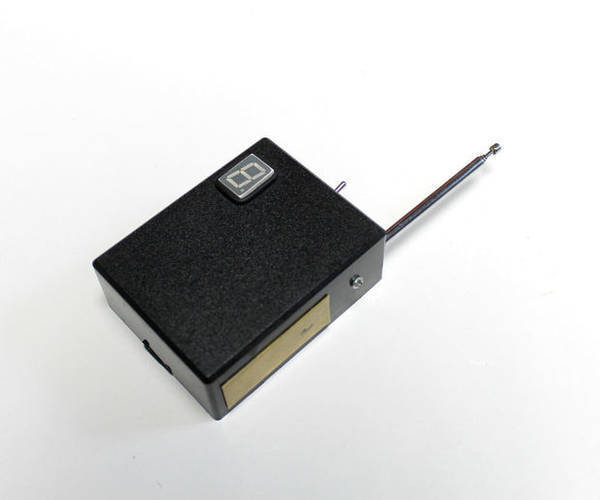
Lightening Detector and Counter
"Ive always wanted to make a lightening detector but found the circuit schematics a little beyond my capabilities. Recently whilst surfing the net, I came across a very cool circuit which counts lightning strikes as they happen! After looking over the circuit schematic I thought finally, heres a lightning detector that I can make with my limited skills. The detector is a simple design and anyone with some basic electronic skills should have no issue making one. The way it works is the circuit can detect discharge from lightning and counts up to 9 through a 7 segment display. Once you get past 9 it re-sets back to 0." [...]

Make a Rain Alert System with Raspberry Pi
"You’ve been left at home in charge of the laundry. It’s already washed and hanging out to dry on the line. But you were warned – on pain of death – to bring it in if it starts to rain. The trouble is, you’re totally into whatever it is you’re coding right now and you won’t even notice if it rains. You’ll be toast if it rains and the laundry gets wet. So which is it to be?" [...]
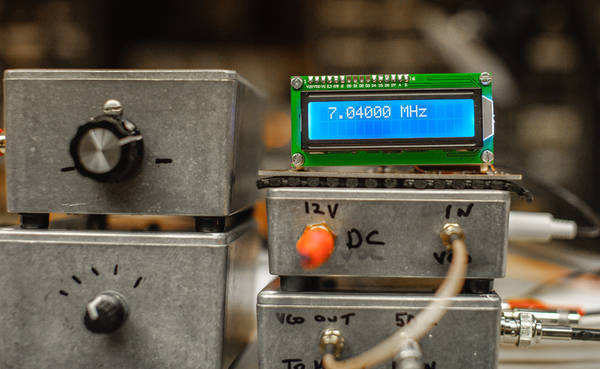
Transistor Radio Series - The 7 MHz Scratch Synthesizer
"I like making simple component-level radios. This Fall, I rekindled my love for making transistor radios and hope to slowly blog some circuits and fun. I'm warning you now — these circuits hearken the 1970s and 80s, SSD, EMRFD, old issues of Ham Radio and other stuff that require no coding skills. For the Ham 40 meter band, I thought about employing an Si5351 for the synthesizer -- naw. While this chip poses a great choice, I wanted something a little more organic. If you go the Si5351 route, I recommend you consider the offerings by EtherKit." [...]
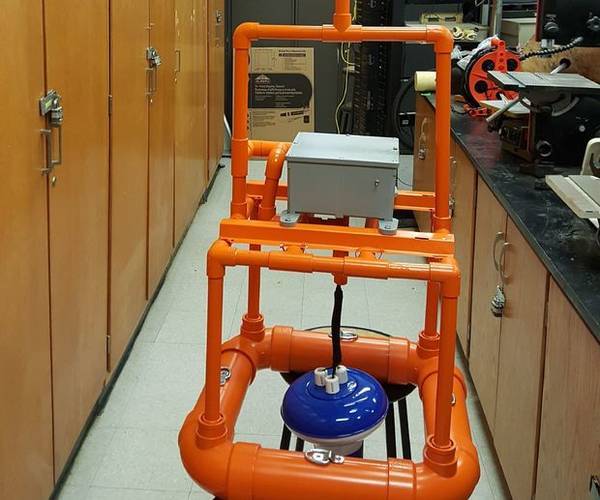
Intelli-Buoy
"Bodies of water are essential to human life. All drinking water comes either directly or indirectly from river water, and they provide beneficial environments for life. Unfortunately, many of these bodies of water can and have become polluted. Elevated levels of contaminants in both the water and sediment along these bodies and unstable levels of pH in the water are only several issues that endanger aquatic environments. As such, there must be a way to quickly and precisely measure several qualities of bodies of water. A buoy was created to monitor the environment of such bodies to track water qualities such as pH, turbidity, dissolved oxygen, temperature, and others over time." [...]
Glass Hexagon LED Pixel Fixture
"An LED pixel based artwork designed to demonstrate the potential of NLED controllers and software. Built around a scavenged light fixture made of soldered bronze and glass, probably dating to the 70s. Combined with standard APA102 pixel strip, a custom hexagon shaped APA102 pixel LED panel, a Pixel Controller Electron, and a ESP8266 WiFi module with addon card. There is a total of 132x APA102 pixels within the fixture all being controlled interdependently. The color sequences are created in NLED Aurora Control software, and then uploaded to the pixel controller, either over USB or WiFi. The controller can run the stored sequences whenever it is powered up, without a computer connection, in what is called stand-alone mode." [...]

UDOO X86 Powered Enhanced Guitar
"A guitar with FX and MIDI controls powered by UDOO X86 In this tutorial we’re going to see how to build an Enhanced Guitar with UDOO X86. Using the Arduino 101 embedded in the UDOO X86 is possible to send standard MIDI packets to any audio application that support them. In this way we can control a Guitar FX software (such as Guitarix or Rakarrack) to add cool effects and change parameters and presets without using any additional pedal. " [...]

Ultrasonic Sensor to Measure Water Height
"How to easily build an sensor to measure water height. " [...]

Smart plant alerts using nio, Raspberry Pi, and Twitter
"Using a Raspberry Pi 3 and a soil moisture sensor, nio sends a tweet mentioning @dale-kylie whenever it’s time to water her plant. Using nio, I set up my desk plant (aka Keanu Leaves) to tweet me when it needs water. Using a Raspberry Pi 3 and a soil moisture sensor, nio sends a tweet mentioning me whenever it’s time to water my plant. Difficulty Level: Easy Build Time: Beginner: 1 hrs Experienced: 20 min Why would you use nio to create this project? Even though I see Keanu Leaves on my desk every day, I sometimes forget to water him. Obtaining data from the sensor and setting thresholds to conclude when the plant is getting low on water and when it needs water was very simple with the nio." [...]

How to Check and Calibrate a Humidity Sensor
"How accurate is your humidity sensor? Find out with this project. Humidity sensors are commonplace, relatively inexpensive, and come in many different varieties. Too often, we check the datasheet, use them with an interface, and (as long as the values “look reasonable”) we accept the results. In this project, we demonstrate how to go a step further and verify the accuracy of a humidity sensor. We also illustrate a general method for sensor calibration and apply the method to calibrate the results to improve the accuracy of the humidity measurements." [...]
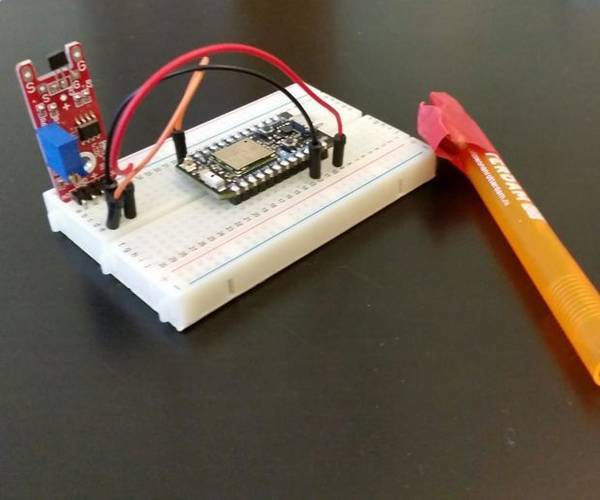
Particle Photon Salinity Meter
"We made a measurement device to measure the salinity of water using a magnetic field and a linear hall sensor.To make it we used a Particle Photon, but an Arduino could also be used as they work practically the same way. To make this project you need a couple of things: - Particle/arduino including a breadboard and some cables - a linear hall sensor - some magnets(we used small but strong neodymium magnets) - a pen - some tape" [...]
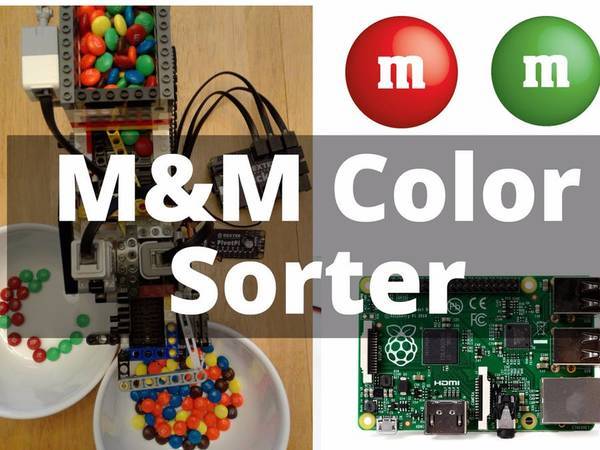
Raspberry Pi M&M Sorter
"In this project, we build a Raspberry Pi M&M Color Sorter to sort red and green M&M's for Christmas! The Raspberry Pi M&M Color Sorter Need to sort out green and red M&M’s for the Christmas season? The Raspberry Pi M&M Color Sorter uses a Raspberry Pi with a BrickPi and PivotPi to sort out green and red M&M’s. The EV3 touch sensor acts as an on/off switch to control the EV3 motor that powers the conveyor belts to make the M&M’s pass one-by-one under an NXT color sensor. If an M&M is detected to be green or red, the servo extends an arm to pull the M&M off the side of the conveyor belt. Tools and Materials to Build The Raspberry Pi M&M Color Sorter Raspberry Pi – The Pi will run the sorting program, read the sensors, and control the motor and servo." [...]

Clap Switch ( 40 Claps in 5 Second)
" Clap Switch has the ability to turn ON/OFF any electrical component by connecting the output of the circuit to a relay switch. Here we are going to make a clap switch with few components with very well explanations. Compared to all other clap switches, Here we use a single transistor and few resistor along with ic555 and ic4017 counter. since this circuit is accurate, I could switch ON/OFF the LED 4 times a second. The 4 times is only limited by my capacity of clapping in a second. This Instructables is mainly focussing on beginners so... let's get started..." [...]
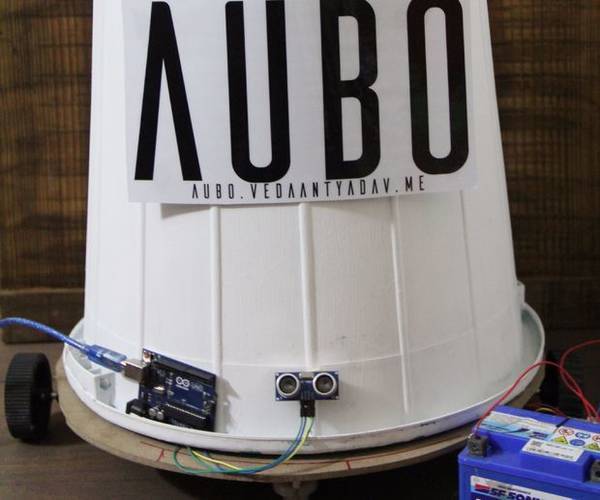
AUBO - an Open Source Autonomous Bot With Arduino
"AUBO is an open source life-size robot that roams around your house, office or anywhere you want. AUBO is fully autonomous meaning you dont need to control it at all! AUBO is Arduino at heart meaning you can add whatever you want to it. From making it a giant fighter bot to a motion-controlled bot with hands. The only limit is your Imagination. AUBO is perfect for giving out pamphlets and even learning Arduino." [...]

DIY LCD Keypad Shield for Arduino Uno
"i searched a lot for making a DIY LCD Keypad shield and i found none so i made one and want to share with u guys. " [...]
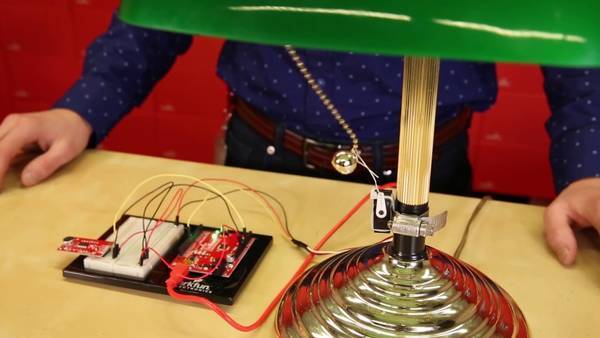
Clap On Lamp
"Perhaps you remember an “As Seen on TV” product known as “The Clapper” in the 1980s and 1990s. The TV commercials could be seen on almost every channel. The premise was simple: a 120 VAC relay would control power to appliances and respond to two sharp noises, specifically two claps. We’re going to make our own version of this, but instead of controlling any appliance, we will operate a lamp chain using a servo. " [...]
That's all Folks!


